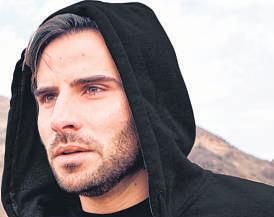









The state of New Zealand’s rural roading network is abysmal and more funding is required to get it up to scratch. Potholes and crumbling roads are a common sight in regional districts. P6






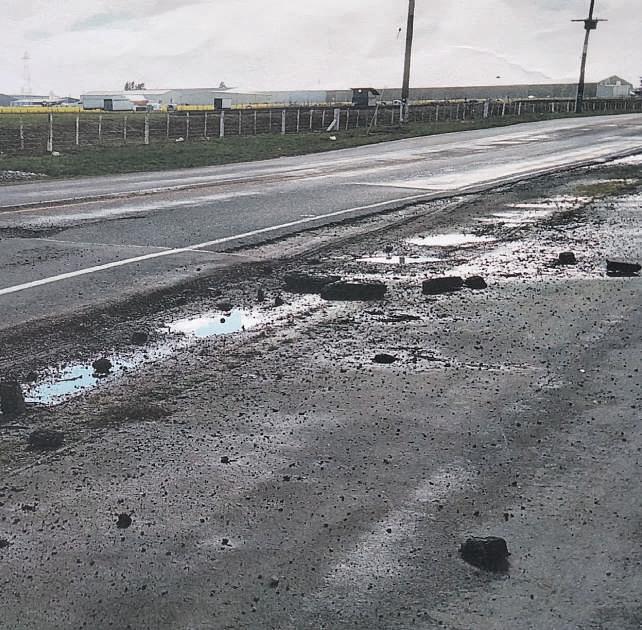



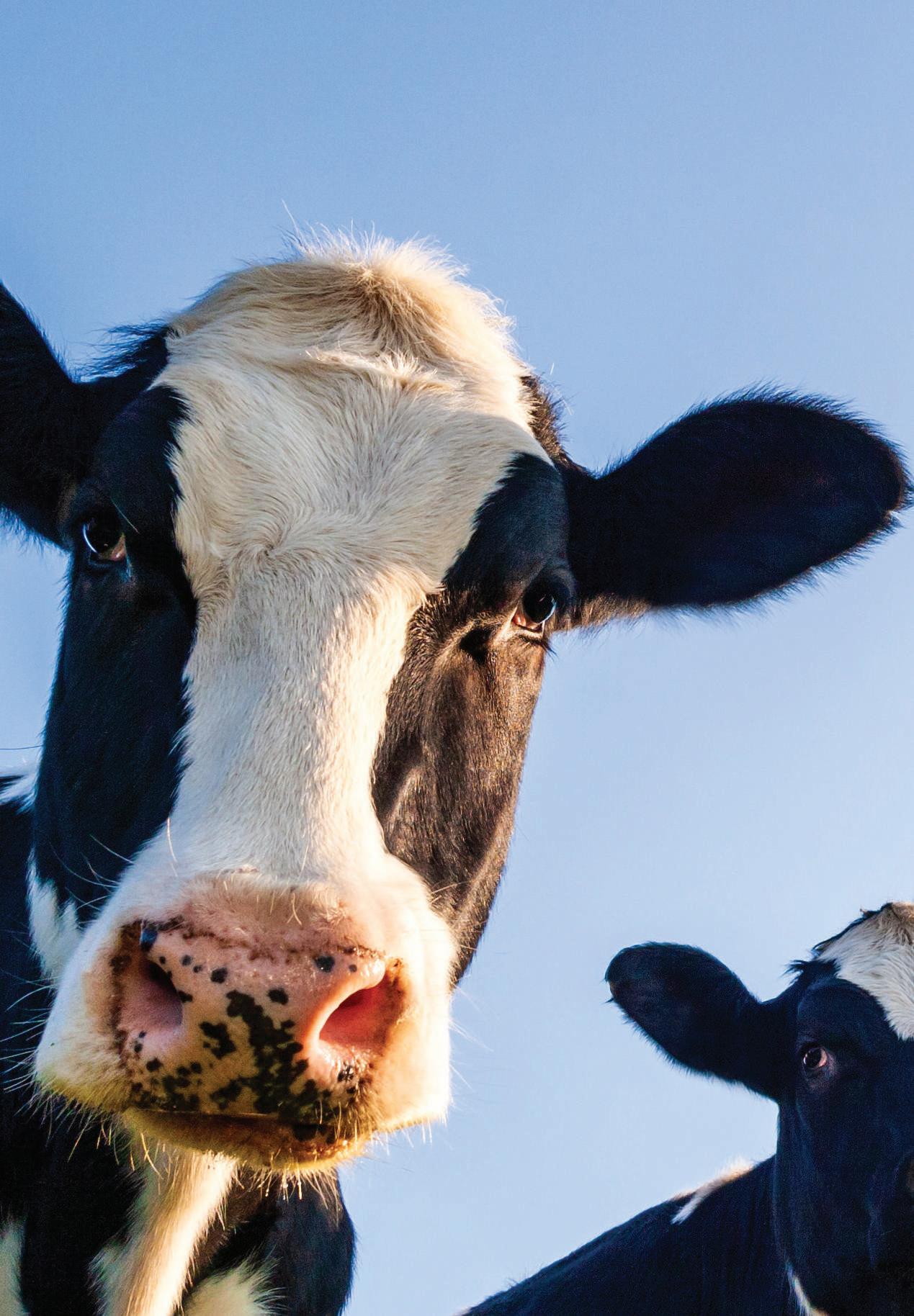


Live cattle exports are a controversial practice and while the previous Labour government banned it, the coalition Government is making moves to bring it back.
By Sonita Chandar.
The Labour government decision in 2021 to ban live exports of cattle by sea had wide implications across the agricultural industry, with millions of dollars in revenue lost for the New Zealand economy and hurt trade relationships. The ban came into effect in 2023 after a two-year transition period to allow the trade to wind down.
The ban was proposed after two reviews into the trade recommended the practice should continue with some modifications
The first review was instigated by MPI following concerns of deaths connected to new farming ventures in Sri Lanka in 2019 and the second was an independent review carried out by Michael Heron QC and Rear Admiral Tony Parr after the sinking of the Gulf Livestock 1 cattle export ship in 2020.
But now, the trade is set to wind up again
One of National’s election commitments was to bring live exports back and steps are being taken to reinstate the controversial policy. Associate Minister of Agriculture Hon Andrew Hoggard says public consultation is set to start before September.
At the time, the decision to ban live exports was described by the then National party spokesperson for animal welfare Tim van de Molen as “a knee-jerk reaction to the tragic Gulf Livestock sinking”.
The Federated Farmers agree, according to national board member and dairy chairperson Richard McIntyre.
“The sinking of the Gulf Livestock 1 was a maritime tragedy that would have occurred regardless of whether it was carrying livestock or electric cars.
“The fact that it was carrying livestock adds to the tragedy.”

McIntyre says the move to reinstate live exports by sea is supported by the Feds provided the welfare of the animals can be assured.
“It will be up to MPI and the livestock export sector to develop regulation that will practically improve the welfare of the animals.”
Reinstating livestock exports by sea will require an amendment to the Animal Welfare Act 1999 and strengthened welfare standards will be developed before the trade returns.
“I acknowledge there is significant interest in this work, and I want to give stakeholders, and the public, a clear timeline for change,” Hoggard says.
“Live exports will only commence once strengthened welfare standards are developed and in effect to protect New Zealand’s reputation as a responsible exporter and international trade obligations.
“My officials are preparing a discussion document that will be released publicly before September.”
Industry organisations such as Livestock Exports New Zealand and the Animal Genetic Trade Association had already proposed new gold standards for the welfare of cattle.
Their website states, “The ‘Gold Standard’ for the export of livestock from New
Zealand by sea is a worldleading welfare assurance programme that ensures our livestock is unequivocally cared for throughout the export process and beyond. The Gold Standard system takes export welfare to a level unmatched internationally and contributes to New Zealand’s position as a premium producer of sustainable and ethically produced agriculture. The ‘Gold Standard’ is backed by strong evidence that the application of these policies will lead to a positive sentient state for our exported livestock.”
opportunity to prove themselves or the standards.
Public consultation will seek feedback on what changes are necessary to the Animal Welfare Act, how to achieve high animal welfare standards throughout the export process, and how to protect New Zealand’s reputation as a responsible exporter and international trade obligations.
“I understand animal welfare is a top priority for all Kiwis. It’s vital, and in fact non-negotiable, that the new standards are in place before the trade is restarted. Hearing a range of voices will help us to understand how we can best achieve this,” Hoggard says.

FederatedFarmersdairy
“After consultation, I intend to seek Cabinet decisions before the end of the year and introduce legislation to the house in early 2025, followed by updated regulatory standards.”
“Live export has provided a significant revenue stream for individual farmers,vets, trucking companies and quarantine facilities.

Associate
Some of the measures they introduced include: minimum standards of weight and condition score that are independentlyverified, low stocking density during transit, no in-calf cattle exported, minimum standards of vessel quality, that will result in the discontinued use of any ship that poses an inherent or high animal welfare risk, a transparent reporting system that measures and reports on animal welfare during the voyage and more. However, they were not given the
“This money has then bounced around rural economies and the wider economy,” McIntyre says.
“It also provides an outlet for surplus stock that would otherwise need to find a home within New Zealand, therefore impacting livestock prices.”
The value of livestock exports by sea was more than $300 million in 2022.
“This is not insignificant. I believe there is an opportunity to expand our live export potential and support the growth of our primary industries, and rural communities,” Hoggard says.
New Zealand livestock is sought after for breeding and the trade supports other countries to reach their food security goals.
“It is valued by our trading partners and gives farmers another revenue source during difficult financial periods, or when weather conditions mean grass production is lower.”



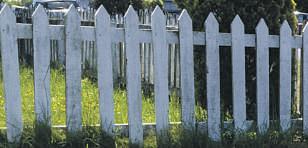
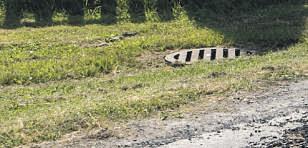


Sonita Chandar EDITOR
NZ FARMER EDITOR
Sonita Chandar 027 446 6221
sonita.chandar@stuff.co.nz
DESIGN
Sam Davenport
Kwok Yi Lee
Rachel Trevelyan
Nina Weil
COVER PHOTO
Steve Macmillan
HEAD OF REGIONAL & RURAL MARKETS
Kate Boreham 021 279 5361
kate.boreham@stuff.co.nz

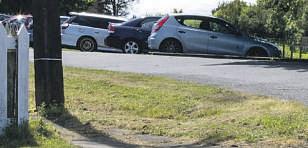


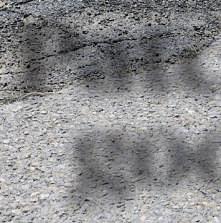







Icrumbling, full of potholes.
’ll have what they have please in fact, it’s probably something we all want, better roads and in particular, roads like they have in Singapore. They have the best-quality roads in the world.
How do they do it and why can’t we?
Oh wait, of course, the answer is good planning, good investment, the size of their population – and money is the big one.
And what do they make their roads out of? Plastic pavement, according to the website of the Land Transport Authority in Singapore.
It says the majority of public roads in Singapore are surfaced with flexible pavement, also called asphalt-mix pavement. Who knew?
But, apparently, Singapore is not the only country to use plastic in its roads. Australia, India, Indonesia, Thailand and the United Kingdom have experimented with plastic roads, too. And they did it in rural areas with low traffic volumes
But some Singaporeans say their roads are not that great. Well, they should get a load of some of ours. All they need do is drive down pretty much any regional road in New Zealand to see roads
State highways and urban roads are just as bad. The damage is exacerbated by weather bombs such as cyclones and flooding.
The roading network – both regional and national – needs serious work.
I was listening to a talkback radio show one afternoon and a caller said instead of patchworking our roads, they needed proper investment to fix them once and for all.
This is true. It is frustrating to see the amount of Band-Aid fixes being done. In my region, Manawatū, the road into the town I live near has had roadworks galore. But then just a few short months later, the crews are back doing patch-ups.
The main arterial route between the east and west of the island, the Saddle road, is a prime example.
And when state highways close for repairs traffic is diverted through regional roads that are not designed for heavy traffic or a large volume and which get damaged again, leaving locals to deal with the mess.
The Government Policy Statement on land transport 2024 was released last month and sets out what it expects to be achieved from its investment in land transport through the National Land Transport Fund (NLTF).
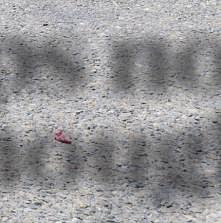
It focuses on:


■ Economic growth and productivity;
■ Increased maintenance and resilience; ■ Safety;
■ Value for money; But does it really matter how much money they throw at the roading network? If the work isn’t done properly once and for all, aren’t they just throwing away good money? Seems such a waste to spend billions of dollars on sub-standard roads. Yes, billions.
The New Zealand Transport Authority Waka Kotahi will deliver $2.07 billion in state highway pothole prevention, with $1.9b going towards prevention on local roads. And that’s just on one issue. If the work isn’t done properly once and for all, aren’t they just throwing away good money?

















Nassella tussock growth in South Canterbury. The species displaces other grasses, leaving pasture unpalatable to livestock. ENVIRONMENT CANTERBURY



Nassella tussock is on the rise in rural South Canterbury, worrying Environment Canterbury’s biosecurity team. By Yashas Srinivasa.
grass with fibrous roots and small, oval seeds. It grows to about 1 metre tall and displaces other grasses, leaving pasture unpalatable to livestock.

Infestations of an invasive grass species in South Canterbury are a growing concern for the regional council.
Environment Canterbury (ECan) said there were about 54 sites where the invasive nassella tussock was known to occur in the region, with dense infestations covering 35 hectares of productive land in some cases. Nassella tussock is a perennial tussock
With infestations of nassella on the rise in the region, ECan said its biosecurity team was growing concerned.
ECan senior biosecurity officer Noel Crump said the success of a search and surveillance programme would be reliant on local information.
“Due to the vast amount of land in South Canterbury, known infestations and pathways to and from these have dictated our nassella surveillance programmes,” he said.
“Information from the community will assist us to put together a more targeted surveillance programme It’s important landowners, stock agents and those in the agricultural industry remain vigilant and keep an eye out for signs of nassella on rural properties.”
ECan also found that hay distributed near Duntroon, in Otago, in the 1970s could be a source of the nassella spread.
“Duntroon, Kurow and Otematata have been the locations of several recently discovered, significant nassella infestations. Our staff are seeking information and linkages between these and historical hay movements
“In the late 1970s, hay was brought into the Duntroon area during a drought and feed shortage.
“One of the properties that received this hay now has a significant nassella tussock infestation, which is being controlled by the landowner with support from us.”
ECan said its biosecurity team was interested in hearing from locals about


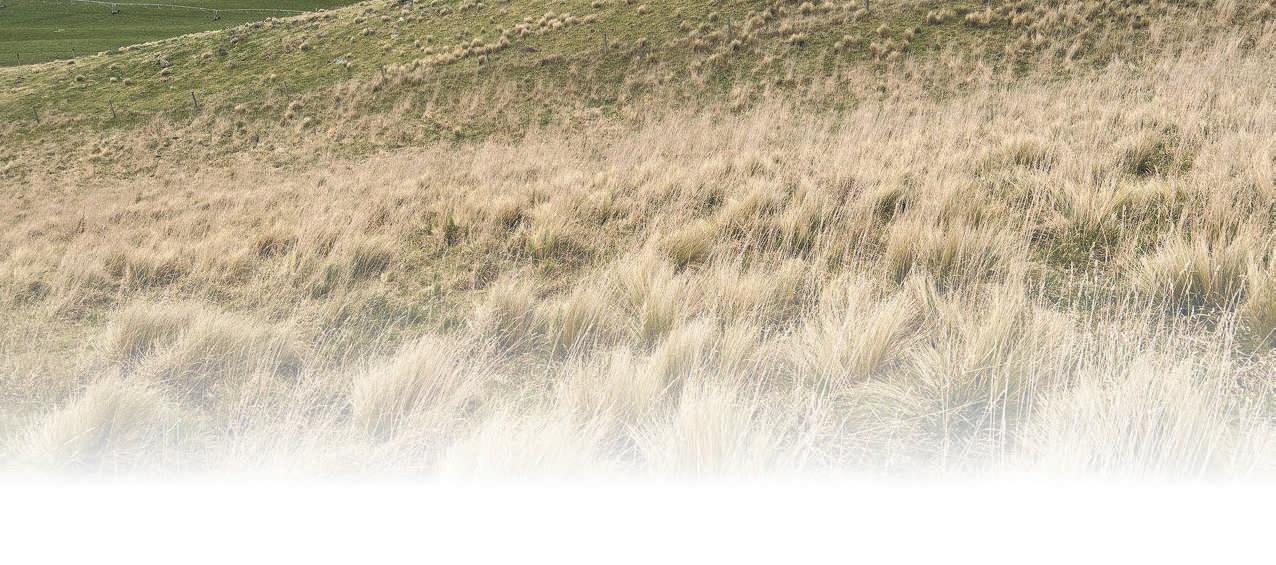

the introduction of hay, other livestock feed, or machinery movements originating from North Canterbury, Marlborough or the North Island from the 1970s to the present.
The regional council was also urging the community to report any plant growth that looked unusual or out of place, particularly large tussocks with purple-pink flowers during November and December.
Anyone who is aware of a historical event such as large hay or seed distribution in the South Canterbury or North Otago area, or who has seen nassella tussock in the region, is asked to contact ECan via the email address biosecurity@ecan.govt.nz or by calling 0800 324 636.






















The way New Zealand deals with its roading network needs an overhaul and serious investment, say regional leaders.
By Steve Macmillan.

Rural communities are suffering as vital lifeline regional roads crumble, deteriorate and potholes develop, causing thousands of dollars in damages to vehicles.
Rural insurer FMG says it paid out $340,000 in claims from 11 rural clients in 2023 This is up from six claims in 2018 costing $105,000
“Over the last four years, there has been an upward trend in the rate of

claims we are receiving for cars,vans and utes that reference the word pothole in the description of their claim,” says FMG advice product manager Abby France.
New Plymouth Mayor Neil Holdom says an independent roading regulator and a new contracting model are needed to fix New Zealand’s fast-deteriorating rural roads.
Holdom is also advocating for the development of a sustainable long-term planning, financing and funding model for land transport which aligns with asset management best practice.

“I would like to see a 10-year asset management plan and 30-year strategy for roading but the reality is fuel taxes and Road User Charges need to increase to adequately fund the system,” Holdom says.
“There also needs to be a shift in mindset from talking about how much we are spending on roading in the regions to a focus on a new contracting model, so we are getting efficient outcomes and



quality roading from the work we do.
“The energy sector is well regulated and that ensures infrastructure standards must be met by our electricity providers. That is why we need regulation on our roading, because it will lift the quality of works and spending in transportation.”
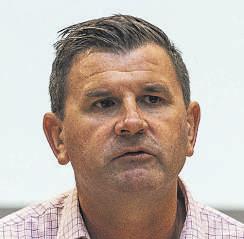
Holdom says the cost of doing basic roading repairs and maintenance has increased by 30-40% in recent years which is why New Plymouth District Council is doubling its annual roading expenditure from $25 million to $50m over the next decade.


contractors well, they don’t get the best outcomes and if you let your roads run to the end of their life, you end up patching them up in winter and that reactive maintenance never works.”
New Plymouth Mayor Neil Holdom would like to see a 10-year asset management plan and 30year strategy for roading but says the reality is fuel taxes and Road User Charges need to increase.
Holdom says while the Te Ringa Maimoa Transport Excellence Partnership – a collaborative initiative between Local Government NZ, NZ Transport Agency Waka Kotahi and all road controlling authorities – has an important role, he believes independent regulation is still needed to get the best out of roading. His views are backed by Federated Farmers transport spokesperson Mark Hooper.
“If district councils don’t manage their

“Our broad concerns around regional roading are the prolonged period of underinvestment which has led to a deterioration of quality,” says Hooper.
“This is particularly evident in the


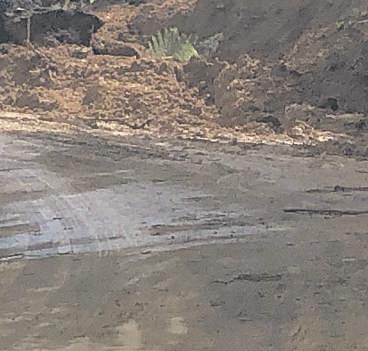




remoter rural areas where there is increased forestry work and councils’ inability to bring roads up to a suitable level to handle the roading impact of logging trucks at harvest.
“Another concern is that we are hearing of examples around New Zealand where sealed roads have been so badly damaged, they are being turned back into unsealed roads. The resilience of our roads to weather events is clearly not good.
“And over the years we have moved away from a model where councils had their own roading departments, where they had local staff and local contractors looking after patches of roads, and they had the ability to do a job if they saw fit.
“Nothing can be done now without health and safety, engineers’ reports, quotes and traffic management plans before a job can even be looked at and our roads are not better for that institutional system. People can identify relatively easily what the problems are.”
Hooper says the cost to rural areas through poor roading, speed restrictions and road closures has put a lot of pressure on people living rurally.
“There is a frustration around an inability to get stuff done as a result, along with the amount of ad-hoc roading repairs being done
“The Government has clearly recognised the problem and is looking to address it through the likes of the pothole fund. But just throwing money at roading is not going to sort it out.
“It comes back to suitable funding for longer-term solutions There is a need for good governance and good decision-making processes around the country to make this happen.’’

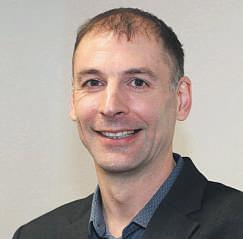
protect them from damage through overloading) means that an additional 3.5 million kilometres are travelled annually. This impacts productivity and costs for our rural sector.
“Southland produces 12% of all rural exports with only 2% of the population and the roading funding model, aside from the misaligned timing that mayor Holdom refers too, is also not equitable for Southland.
Southland District Council Mayor Rob Scott says the region has the second largest roading network in the country (behind Auckland) so, like other councils, that makes funding roading challenging.
“We have 5000km of roading to look after, including 841 bridges, with a very small rating base of only 20,000 ratepayers to help cover the costs,” Scott says.
“Southland’s roading network is crucial for our rural sector to get their produce to market and the posted bridges alone (those with speed or weight restrictions to
“Our funding assistance rate is at the lower end of what councils receive up and down the country, at 55%, when it should be up at around 71%.
“An investment in the roads of Southland is an investment in NZ Inc, and at the moment our ratepayers, particularly our rural ones, are paying twice for our roads.”
Northland Chamber of Commerce chief executive Darryn Fisher is also deeply concerned about the ongoing and deteriorating state of regional roads
“Our region, like many others, relies heavily on an efficient and well-maintained road network for economic stability and growth. The current condition of our
roads is not only a safety hazard but also a significant impediment to business operations and regional development,” says Fisher.
Northland faced unique challenges due to the vast kilometres of gravel roads that formed a significant part of its transportation network – roads were particularly susceptible to wear and tear, requiring frequent maintenance to remain passable.
“The situation has been exacerbated by the devastation caused by Cyclone Gabrielle in early 2023. Many roads are still
“
The pothole-prevention fund has been increased ... but that is only going to get us back to where we were.’’
Darryn Fisher
undergoing repairs, and the progress has been slower than anticipated, leaving our communities and businesses struggling with unreliable and hazardous road conditions.
“The poor state of our roads affects everyone, from local businesses and primary industries to everyday commuters and tourists. In Northland, where the economy is driven by agriculture, forestry and tourism, the impact is especially pronounced.”
Fisher is adamant that inadequate road infrastructure leads to increased transportation costs, delays and a higher incidence of vehicle damage and accidents, and these challenges not only hinder the competitiveness of local businesses but also deter potential investors and visitors.
That’s why he believes it is crucial that the Government and relevant authorities prioritise the upgrading and maintenance of regional roads.
“Investing in our road infrastructure is an investment in our communities and our future. Improved roads will facilitate smoother and safer transportation, enhance economic activities and promote regional growth. Furthermore, well-maintained roads are essential for emergency services and the overall wellbeing of our residents.
“We understand the pothole-prevention fund has been increased, which is welcome news, but that is only going to get us back to where we were, not move us forward so we urge the Government to allocate sufficient resources to long-term sealing and maintenance of regional roads.
“Collaborative efforts between central and local governments, along with input from local communities and businesses, are necessary to develop and implement effective solutions.
“The Northland Chamber of Commerce is ready to work with all stakeholders to advocate for and support initiatives that will lead to significant improvements in our road infrastructure.
“Together, we can ensure that our regional roads are safe, reliable, and capable of supporting the economic prosperity of Northland and all regional New Zealand.”
He says regions like Northland can’t continually be cut off from the rest of the country by road closures like that of the Brynderwyns, which were closed for a number of months after Cyclone Gabrielle.
The Brynderwyns were temporarily opened last month and will close again over warmer months for work to continue.



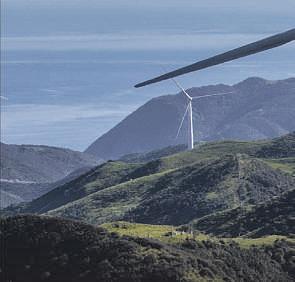






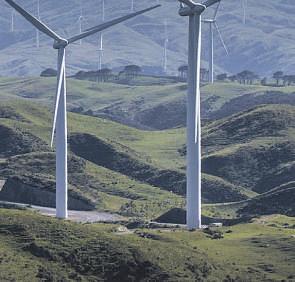
Soil scientist Doug Edmeades says some solutions to clean up the environment have their downsides and come with their own eco-costs.
Open the shutters, ring the bells, sound the trumpets, for the future is upon us. Well sort of.
In this spirit I was delighted to read that the Commissioner for the Environment Simon Upton chided the delegates at a recent conference of the Environmental Defence Society (EDS).
Using my words to summarise his message, he told the delegates to get real The audacityof the man – I thought attempting to slay green dragons was outlawed?
The commissioner presented his paper as five Inconvenient Truths, making reference to Al Gore’s much quoted headline. He told the conference that he accepted that these inconvenient truths may be “confronting, but are the world as it is for many people, rather than the world the environmentalist would like it to be”.
And he urged the environmentalists to “stop talking across the divides,both urban and rural, and find solutions that work on

the ground and work for everyone” I think this boils down to being realistic and pragmatic.
Applying my interpretation, what are some of these confronting, inconvenient truths?
Importantly, the commissioner noted that ‘degrowth’ was not a goer. Greens are very keen on this idea – “to go forward environmentally we must go backwards socially and economically” Mike Joy and the Greens co-leader are prominent exponents of this theory.
Although the Greens talk theoretically about win-win scenarios, this is rarely the case.There is nearlyalways a cost associated with green goals and it is important that these are recognised. A good example is the plan to clean up the Waikato River. We can restore it to a nearpristine state but the cost to the region, socially and financially, will be crippling.
Closing down polluting industries may not always lead to the desired outcomes. A topical example is the fertiliser industry. Some see it as an old polluting monster, a hangover from the Industrial Revolution which we should learn to do without
Sure, getting rid of it would be one thing but, as discussed in a recent column, its value to the New Zealand economy is about $44b annually. Withholding fertiliser inputs would cripple New Zealand’s agriculture. Some Greens argue this would be an ideal outcome for the environment but the social and economic impacts are too large to contemplate.
Trade-offs will be necessary and those with a green bent will need to accept this possibility in some circumstances, depending on the risks and options
For example, Round-Up (glyphosate) is an industrial chemical. It kills most weeds. Its use is widespread because it enables farmers to practise no-till cropping.
Cultivating (tilling) damages soils This can adversely affect soil structure resulting in increasing run-off of water and nutrients, and the loss soil organic matter So, to ban Round-Up forces farmers backwards to less optimal cultivation practices, which can damage the environment.
And remember that despite what the lobbyists say, RoundUp is one of the safest chemicals that mankind has developed. Talk about win-win.


er is seen by some as god’s gift to renewable energy. But stop and consider for a moment. Each wind tower requires about 600 to 1000 tonnes ofconcrete,and where does cement come from? Yes, indeed from burning limestone to make burnt lime and hence onto cement.This requires energy–take your pick; wood, gas or coal?

Even with the best green-will in the world, some environmental damage is unavoidable as we transition to the clean green future. Renewable energy requires new technologies and some of this technology depends on heavy metals such as lithium, antimony, cadmium, lead, zinc and mercury.
These elements do not grow on trees –they have to be mined and refined. Some ecosystem damage is inevitable and this must be accepted even by the most ardent greenie.
Finally, the move towards wind pow-
A wind tower also requires large amounts of steel (160 to 200 tonnes). And how do you make steel? Oh yes, that’s right – high grade coal is required. And do not forget that the box atop each tower which contains the internal moving parts, requires about 2500 litres of lubricant which must be replaced every year.
To complete the story, the huge blades are made of composite materials, which, as things stand at present, are not biodegradable and so, after a lifespan of about 20 years, they cannot be recycled and are destined to end up in the landfill
The message I take from the commissioner’s talk is that: “Green does not always mean clean.” That romantic ideal needs to be wrestled to the ground of pragmatism. And I loved his concluding challenge: “If we want to avoid the dirty growth on offer from doubling mining or agricultural exports then we have to say [I would have used the word, ask] – how else will we maintain our living standards?” Bravo, bravo, bravo!
Business adviser Gordon Stuart expects next year’s economy will be slightly better than this year’s.
Survive to 2025 is the maxim I’m hearing
It’s a good maxim but implies we will be back on track in 2025. I doubt that.
At face value, 2025 will be better than 2024 As inflation declines, so should interest rates.
The Reserve Bank, Treasury and bank economists are all predicting a lower Official Cash Rate and stronger growth in 2025. There are dangers though when everyone is saying the same thing, like last year when the NZD/USD was forecast to rise towards 0.65-70, and this week the USD 10-year rate touched 4.5% again.
Lower interest rates will help ease interest cost burdens. Less inflation makes incomes
stretch a bit further. Farm cost inflation has flattened out, but volatility continues with the latest Global Dairy Trade down about 6%.
Do not be lured by some sort of fillip to the economy from lower interest rates.
No-one is predicting strong growth – just something marginally better than 2024
Protectionist vibes continue to emerge around the globe. Getting, and doing trade deals is not getting easier. Borders are being put up, not taken down.
Mother nature will continue to test us through oscillations in climatic conditions.
A moderation in wage growth is helping, but wage levels remain a lot higher than they were five years ago.
A new government may have altered the environmental landscape in the near-term, and brought farmers some time, but that has not altered the long-term challenge:
Substantial investment and change is required to transition to a lower-emission environment
Trade counterparts such as Europe will push back and limit access if we are not meeting environmental and sustainability
standards. New Zealand must push on. New Zealand export producers are not alone in facing climate risks and environmental protection policies Everyone else is facing the same.
China’s growth looks slower and carries a lot more risk India is a replacement, if trade access can be unlocked. Connections with established markets such as Japan are being strengthened. Growth enablers, such as water, irrigation and roads, which appear set to be prioritised by the government, will take time to bear fruit.

As an ex-banker, I’ve seen a few cycles. If bank nonperforming loans are any guide, this has not been a severe cycle yet Bank non-performing loans are one third of what they were just after the Global Financial Crisis, partly because debt levels are lower.
Agriculture non-performing loans are less than half; 1.8% nowversus a peak of 4.5% in
Agriculture debt has risen a slow 5% between the end of 2016 and now. Dairy debt has fallen 10% The low level of non-performing loans might also reflect timing. An improved economic outlook could take time to growth back to levels needed to sustain operations.
It may also reflect low levels of risk tolerance by banks in making loans, relative to the interest rates they are charging. This is a key theme the farming sector needs an answer to when the Finance and Expenditure Committee begins its inquiry into banks.
We know from history that the full extent of problems businesses face lags the economy.
So, while it appears we can look forward to 2025 being a better year than 2024, do not get lulled into complacency. There is still a huge amount of adaptation and change required, and opportunities to grasp. Lower interest rates are just one influence.

The outlook for primary industries is looking promising as we head towards record revenue in the coming years.
By Sonita Chandar.
The June 2024 edition of the Situation and Outlook for Primary Industries (SOPI), is forecasting an increase in revenue for the agriculture industry.
New Zealand’s food and fibre sector continues to make a significant contribution to the New Zealand economy. The sector accounted for more than 80% of the country’s goods exports in the year to March 31, 2024 Over the last 10 years, food and fibre exports have grown on average by 3.6 % per year whereas other merchandise exports have grown by 1.6%.
The Government has an ambitious plan to double exports in 10 years.
“We have set the aspirational goal of doubling exports byvalue in 10 years. At the heart of this is New Zealand’s worldbest food and fibre sector As Minister of Agriculture, Forestry and Trade, along with my colleagues, we have made a commitment to conduct a record number of trade missions to grow our relationships, deepen our business connections, and open doors for Kiwi exporters,” the Minister of Agriculture, Hon Todd McClay said.
“This includes increased investment in our relationships with the Gulf Cooperation Council, India, the Pacific Alliance, and partners across South East Asia We will renew investment in our enduring trade relationships to foster conditions that spur further achievement and facilitate highquality free trade agreements.”
In the report, the Minister said doubling the value of New Zealand’s exports required strengthening the foundations for growth
and increased investment in innovation.
“We have also recently kicked off negotiations with the United Arab Emirates (UAE) on a Comprehensive Economic Partnership Agreement to unlock further commercial opportunities for our exporters.”
Food and fibre export revenue is expected to reach $54.6 billion in the year to June 30, 2024, down 5% from the $57.4 billion in 2022/23 due to higher prices for the dairy, horticulture, seafood, and arable sectors. Revenue will increase to a record $66.6 billion in the year to June 30, 2028.
The export revenue reached in 2023/24 was a correction in prices for key commodities including dairy, beef, sheepmeat, forestry, and wine products which reflected a slowdown in global growth and depressed import demand in key export markets such as China.
The slowdown over the past two years is due to a surge in inflation, tightening of monetary policy, and rising geopolitical tensions. Higher global production and export volumes for food commodities are dampening export prices. A weaker NZD against the USD has supported export revenue in year to June 30, 2024
Our 10 largest markets are China at $17,536m, followed by the US $6,307m, Australia $4,516m, the EU, excluding the UK, $3,246m, Japan $2,650m, South Korea on $1,493m, Taiwan $1,432m, Indonesia
$1,398m, Malaysia $1,187m and Thailand
$1,115m, rounds out the group.
Dairy had the highest percentage of exports on 44% which equated to $23,698m with China our biggest dairy market. Meat
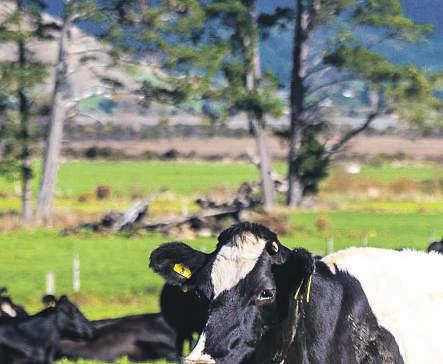

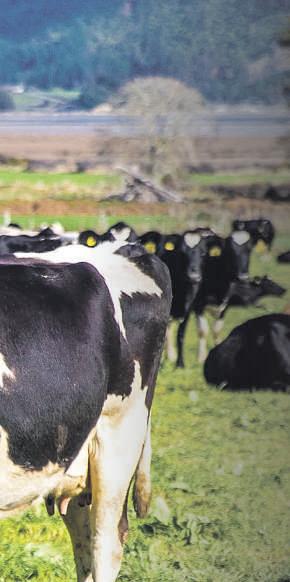








Forforestry,adropof7%to$5.9billion intheyeartoJune30,2024,inrevenue isexpectedbutshouldriseinthenext twoyears.

Horticulture revenue continuestorisewith an increase of 1% to $7.1 billion duetomore favourablegrowingconditions.
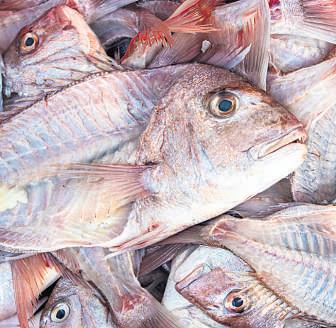

and wool on 21% was $11,394mwith China once again being thelargest market. These werefollowed by horticulture at 12%, forestry 11%, seafood 4%,processed food on 6% andarable1%.
Dairy
Dairyexport revenue is expected to decrease7%to$24.2 billion in theyear to June 30, 2024,due to lowerglobaldairy prices driven by weaker global demandand an increase in supply, specifically improved milk production in China. Milk productionis forecast to increase0.7%driven by betterthan-expected weather conditions.
Thedrop in exportprices is expected to lead to alower farmgate milk price of $7.90 per kilogram of milksolids for thecurrent season. The lowerfarmgate price combined with high farmexpenses, especially greater debt servicing expenses, is likely to reduce farmprofitability.
Meat and wool
Meatand wool exportrevenue is expected to decrease 6% to $11.4billion in theyear to June 30, 2024
Keymeat exportprices are expected to falldue to higherglobalred meat production and weakerglobaleconomic conditions
Lower exportprices for beef, lamb, mutton, andwool are forecast to be partially offset by higher pricesfor petfood and venison. Higher lamb andbeef export volumes arealso expected to help partially offset export price falls.
Sheep andbeef farmprofitbefore taxis forecast to fall 54% in 2023/24, following a29% decline in 2022/23, duetolower revenue and higherinput costs.
Forestry
Minister of Agriculture, Hon Todd McClay said, the Government recognises the importantrole agriculture playsindriving New Zealand’s economic success.
KELLY HODEL/ STUFF
Adrop of 7% to $5.9 billion in the year to June30, 2024,inrevenue is expected Supply-side shocks decreasing export volumes and weak global demand for processed wood products are expected to be partially offset by an increase in log export volumeand revenue.
Large log exportvolumes mostly offset by weaker prices are expected to tip log export revenue into aslight year-on-year increase of 1%. Export revenue declines are expected in allprocessed wood product categories. In 2024/25and 2025/26, processedwood production is forecasttorecover,lifting exportrevenue.
Horticulture
Horticulture exportrevenue is expected to increaseagain by 1% to $7.1 billion. Climatic conditionswere favourable for most cropsrecoveringfrom theimpactsofthe previous wet summersand cyclone damage. Kiwifruit, apples, cherries, and vegetables allsaw increases in production. This was countered by weak demand for wine due to high global inventories and apoor season for avocados. Harvestshavebeen assisted by agood supply of seasonal labour with bothRecognised SeasonalEmployer scheme workers andbackpackers available. While fertiliser and fuel costs have declined over the past year, overallinput costsare rising.
Seafood
Revenue is expected to increase 5% to reach $2.2 billion. Exportrevenue from aquaculture is set to increase 12% driven by higherpriceswhile wild capture revenue is


set to increase 3% driven by higher volumes. Export prices of key export species are expected to remain high duetodemand and tightglobalsupply. Export volumes are expected to rebound from aparticularly bad year for seafood production helped by several factors including improved technology, and increased workforce availability. Despiteimprovements in prices, high input costsremain achallenge forfishers.
Arable
Arableisexpected to increase 12% to $310 million in theyear with increased returns in allexport categories ledbyvegetable seeds. Seasonableconditions were mostly favourablethrough 2023/24, finishing with agood harvest. Totaltonnage for cereal crops was up 3% on last year due to a4% increase in overallyields from asimilar number of hectares as last year. Domestic grain prices have fallenoverthe last year, and demand for grain hasbeen subdued.
Revenue for the processed food and other products sector is expected to decrease 1% to $3.5 billion which stems largelyfrom the ban on live animal exports by sea. However, the National Government hasrecently announced it is moving forward with its commitment to reinstate the sector.
There is strong growth in the other products sector, which is forecast to reach $1 billion in export revenue for the first time, primarily driven by upward trendsinthe exports of vegetableoil
Thehoney sector is also showing signs of recovery with export revenue expected to grow by 11%.Across the food and fibre sector, 359,000 peoplewere employed in the year to March 31,2022, representing 12.8% of the totalworkforce. Primary production employment is distributed across the country, but processing and commercialisation activities are concentrated in Auckland and other major population centres.
“ThisGovernment recognises the important roleitplays in driving our economic success whetherthisisthrough the jobs it provides, the rural communities it supports, or the millions of people around the world it sustainablyfeeds,” the Minister said.
“The Government is committed to backing our leading exporting sector’s continued success, profitability, and sustainability.”


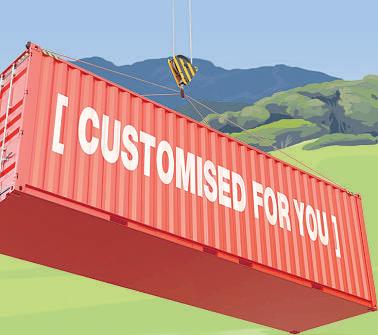



















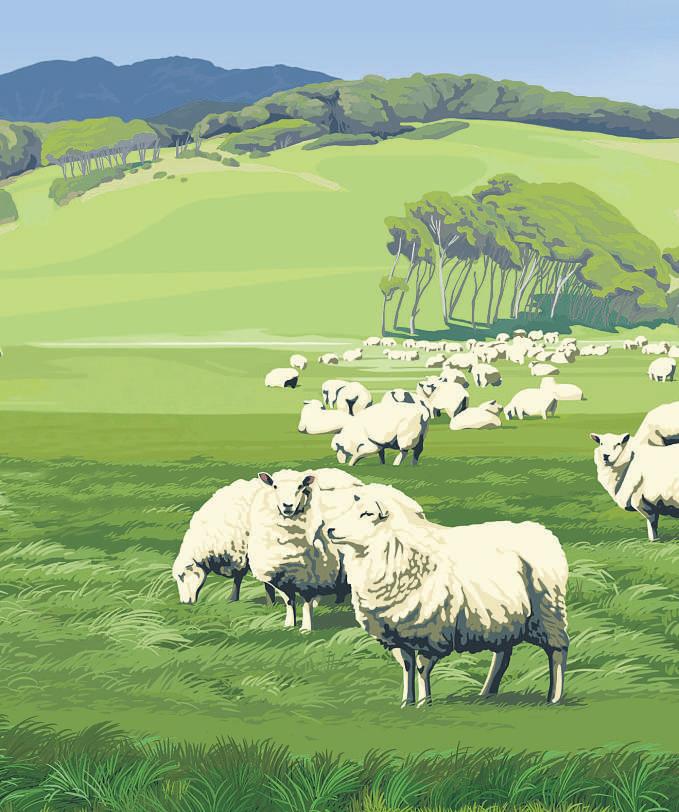
Toughwork.That’s exactlywhatour rotary platformsare made foratGEA Farm Technologies.Withsolid engineering, thebails aredesignedtotakecowsofall sizesand breedsand theon-platform automation meansjustone person canmilk. Thismakes it possible foryou to successfully improve cow comfortand lowerlabourrequirementsduringmilking.
Inanindustrythatneverstopsaday,makesureyouget theperformanceyoucanrelyonforyearstocome.
CallGEAon08004323276tolearnmoreabouta DairyRotorT8500rotaryupgrade.















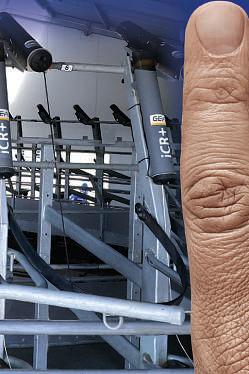















By Louisa Steyl.
Kiwis are cautiously open to the use of genetic technologies in food production, even if they don’t quite understand it.
This is according to new research from agricultural research and advisory firm Primary Purpose to understand high-level public perception of using genetic technology as interest in its domestic applications grows.
“This is an area where the science is not static,” Primary Purpose founding partner Dr Scott Champion said “It’s moved on since the last time New Zealand had a significant conversation about it.”
In March, Minister of Science, Innovation and Technology Judith Collins told the Life Sciences Summit that legislation to enable better use of gene technologies would be passed by the end of 2025
For food production, this would give scientists the means to develop more resilient crops and improve livestock health.
Primary Purpose’s research found that 34% of respondents were generally supportive of genetic technology while 29% wanted to keep New Zealand food production systems completely free of any genetic technology “I thought that number would have been higher,” Champion said
In the past, resistance to the use of gene editing has been for fear of unintended consequences or that it might damage New Zealand’s “GMO-free” agricultural brand, but Prime Minister Christopher Luxon has previously said any damage to the brand would be offset by increases in efficiency; while the National government intends to
have a regulator in place before it loosens restrictions on genetic research.
Climate Change Minister Simon Watts believes it will be crucial to helping New Zealand farmers fight climate change. Regulations would be designed to take a range of scientific, ethical, social, cultural and economic consequences gathered from research, and applications of gene editing or modification into account, he told Stuff earlier this year
In a nutshell, genetic editing refers to altering parts of DNA that are responsible for specific traits – like resistance to certain diseases in animals, or hardier crops.
Gene editing doesn’t involve the insertion of material from any other species. This is referred to as gene modification.
Champion was surprised at how honest survey respondents were about how little they understood genetic technologies – 50% said they knew “not that much” while 19% knew “nothing”.
There was a real opportunity to raise awareness about what genetic technologies were, how they were being used overseas and what the potential risks could be, in a contemporary context, Champion said.
Those who were in support of genetic editing were especially open to its use in controlling pests and diseases, reducing the need for pesticides, to help lower farm costs and potentially reduce prices for consumers, to improve drought resistance of crops and to increase nutritional value of foods.
When asked about how they wanted to see New Zealand use genetic technologies in food production, 45% of respondents wanted it to be approached on a case-bycase basis to make sure it was safe.
Champion said while previous research had looked at the impact of genetic technology on New Zealand farming and what it would mean for exports, “often, the bit that was missing was what people think domestically”.
“It will be interesting to see how the discussions around genetic technology evolve,” he said.
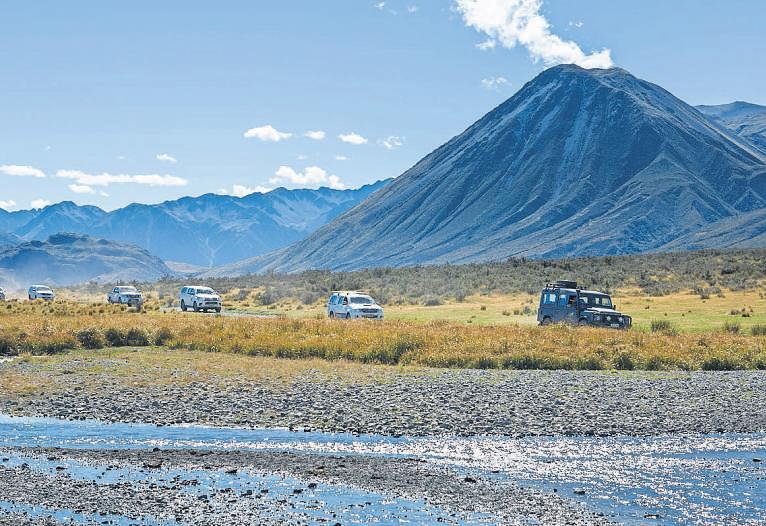


South Island High Country‘Grandslam Tour’. Self driveyour own 4WD from Blenheim to Cardrona in Central Otago through anetwork of high countrytracks including Molesworth with this 7day 8night tour.
• Drive from station to station and experience the majestic South IslandHigh Country
• Stay in comfortable farm/homestays, lodges and historic hotels
•Smaller,fully-guided tour group with radiocontact.

NOW TAKING BOOKINGS FOR2025 SEASON Limited spaces still availablefor November2024 Contact John Mullholland Phone027 228 8152 •RANFURLY info@highcountryjourneys.co.nz www.highcountryjourneys.co.nz



Not every farmer can say their produce ends up in vending machines in Japan, but the Tayler brothers, who grow juicing carrots in Winchester, South Canterbury, can.
Bags of potato chips and carrot juiceboxes are two end products for Michael and Nick Tayler’s operation, with the carrot juice sold in Japan and potato chips on home soil in New Zealand.
They’ve been in the carrot juicing game for 16 to 17 years, approached by Juice Products New Zealand (JP-NZ) to grow juicing carrots.
The JP-NZ factory is based in Washdyke, Timaru, and is the second biggest carrot juicing company in the world, chief executive officer Chris Renfree says, putting South Canterbury on the world map.
JP-NZ was acquired by major Japanese company Sumitomo Corporation in 2014 and is a leading processor of raw carrots into high quality carrot juice
concentrates. It exports its juice to North America, Asia and Australia. Their largest consumer is Japan.
Health is front of mind for Japanese consumers, so rather than a classic bottle of lemonade, you’d find a box or bottle of carrot juice in a standard Japanese vending machine, or even on a Japanese cocktail menu.
“They’re really big on health and drinking healthy products, they use a lot of it for mixers and spirits,” Nick says.
“They like the flavour so much that they’ll buy a 100% carrot juice and drink it like any other branded drink,” Renfree says.
Not only can the juice be found in juice boxes, but also soups, baby foods and more surprisingly, ice cream and yoghurt
JP-NZ’s production runs 24 hours a day, seven days a week, for seven months of the year. This means JP-NZ’s agricultural and supply chain manager Kevin Teahen has to plan their
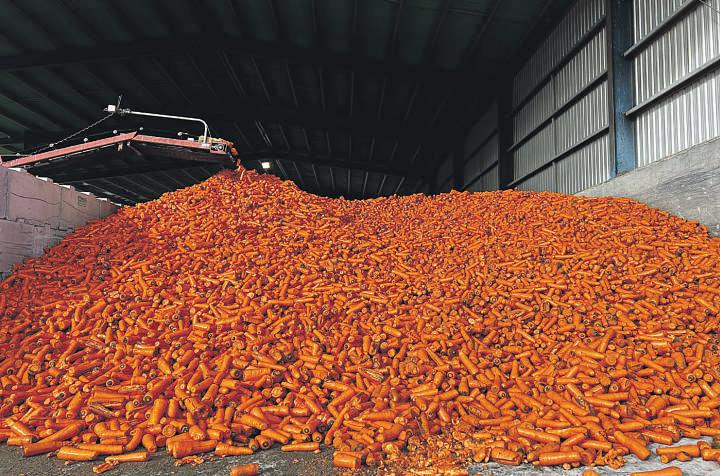
By Bethwyn Littler.
Ffuel machines by 2030, and he says farmers are going to play a key role in making that happen.
“I do scratch my head sometimes asking why it takes a cherry farmer to figure out how to change the energy sector There are
A Timaru juice product company and two Winchester farming brothers have put South Canterbury on the world map, and their carrot juice in vending machines across Japan.
By Eve Hyslop.
From left: Nick and Mike
have been supplying their carrots to JP-NZ for 16 to 17 years now and say it has made better use of their yield. FEDERATED FARMERS


production lines accordingly.
“Kevin’s had to develop different varieties, different planting conditions, different timing for planting and different harvest cycles, just to try and extend that season out to a seven-month season,” Renfree says.
Their production runs at such lengths to maintain a consistent colour and flavour of the juice, which is critical to the consumers.
“We have to use a range of different varieties, to make sure that we can maintain that colour all year round We’ve run a lot of variety trials over the years to find the best mix that is fit for what the factory needs, and what the growers need as well,” Teahen says.
Renfree says their relationships with growers like the Tayler brothers are fundamental to ensuring their operation runs smoothly.
“That’s one of the things that sets us apart from other people is our long-term relationships with farmers that have good soil, good production and good equipment.”
As far as the future goes, the Tayler brothers’ main focus is what’s happening inside the gate, while adding more
Mike Casey operates a fully electrified farm and orchard in Central Otago. He is chief executive of Rewiring Aotearoa.
vegetables into their crop rotation.
“We try to maximise our yields and make them as financially sustainable as we can so that once they leave here, we can rely on a lot of other people to market and push our products around the world,” Mike says.
Maintaining those yields so far have included a focus on their soil health by no longer stubble burning to improve their organic matter, using machinery that is more gentle on their soils and taking careful consideration into the timing of their harvest.
“At the end of the day, yield is king and we do try to chase as high yields as we can. Arable farming is a risky business because we only have one chance to harvest our crop each year. Hail or frost can wipe out an entire production.”
The brothers have been able to navigate the weak arable market by growing a broad range of crops, including wheat, barley, maize, peas, turf ryegrass alongside carrots and potatoes. This makes them less reliant on one commodity.


“This spreads our risk out, so if the price of one crop is down, another might be up,” Mike says.


far more talented people out there than me.”
“I
He
set foot on a farm in my life. We ended up planting 9300 cherry trees.”
Casey has achieved his goal of having a 100% electric farm. His next plan is to electrify farms all over the country.
“My interest has always been in energy and the climate, so not only did the cherry trees turn the land into a commercial
operation, they brought down the electricity costs. We can’t necessarily control the cost of labour and fertiliser but we can control the cost of energy.” Casey used two methods to reduce the cost of energy on his property.
“I spent the first five years electrifying 21 machines on the cherry orchard. Now we don’t use any diesel or gas or petrol on our farm. We are 100% electric.” The second phase was by generating his own electricity.













“At the end of the day, yield is king and we do try to chase as high yields as we can.










carrots has utilised their machinery more efficiently. EVE HYSLOP/STUFF




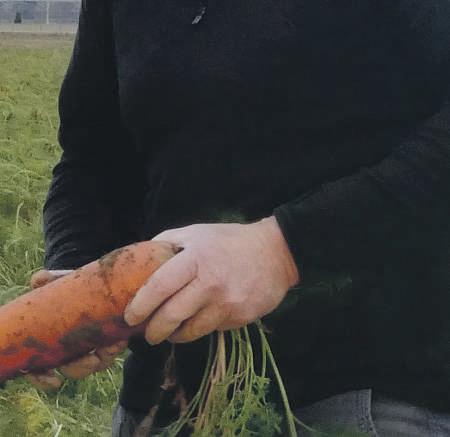

“By generating electricity we have a form of energy sovereignty on the farm and we drive down our energy costs.”
So far he has saved $40,000 per year for power.
If he sells his excess power and reduces demand at peak times he could make another $20,000 each year
The machines Casey has electrified include two electric frost-fighting fans, irrigation, frost-fighting pumps,vehicles, chainsaws and weed eaters. Many of these traditionally use diesel.
“I am currently converting a 1990 Hilux to electric and we have New Zealand’s first imported electric tractor.”
Casey has recently joined Federated Farmers to help him connect with farmers across the country.
“What I am advocating for is farmers with solar, not solar farms. Solar farms are big energy incumbents coming and renting land that could be used for growing food and turning that into a business where the proceeds do not stay within that community
‘‘We are going to need some solar farms but it could be the next pine forests if we are not careful.
“With solar panels farmers can use unproductive land to generate electricity which saves on their bills. If the farmer is making money from these resources rather than renting the land out, the money stays
within the community. Farms could actually be the future power plants of New Zealand
‘‘Rather than large-scale solar farms or residential panels, farms are a medium-scale solution.
“There is big talk about energy security at the moment after the recent power crunch but nobody is talking about the gift of the strong agricultural industry. Farmers won’t be the silver bullet to solving the energy security problems but they could significantly contribute to it.”
Casey says they have recently put out the Electric Homes Report which details the plummeting costs of solar and batteries.
“Ten years ago they were not economicallyviable. We now find ourselves in the remarkable situation where, excluding the cost of finances, it is now cheaper to generate solar and store in a battery than it is to get it from the national grid.”
Rewiring Aotearoa has several ideas about how to remove barriers to allow farmers to install solar in New Zealand.
“We think all district plans should allow mid-scale ground-mounted solar installations as a permitted activity because of the obvious economic and environmental benefits and negligible impacts.”
Casey says micro-hydro schemes that are non-consumptive could also be considered as permitted activities which don’t require resource consent.
Meat the Need, a farm-led charity, needs to find 46,000 more meals to feed people in the Taranaki region. By Bethwyn Littler
Meat and milk are nutritious staples for growing families but as the cost of food rises these items are often trimmed to keep the weekly budget down.
Meat the Need is a farmer-led charity facilitating donations of livestock, milk and cash to turn into mince and milk meals for those who need it the most.
Alongside their sister organisation, Feed Out, Meat the Need co-ordinates the collection and processing of donated livestock and milk and cash for meals.
They have distributed 2.1 million mince and milk meals since the charity started in 2020.
In December 2023 they held a rural telethon raising meals for food banks across New Zealand.
Meat the Need supports nine food banks and community organisations in Taranaki, but a surge in demand means another 46,000 meals are needed in the region this year
General manager Zellara Holden said the feedback from food banks and community organisations across the country is that current demand is unprecedented.
“Some are reporting to us that demand for their food support services has increased by 30 to 50% and they are having to tighten their application processes to be able to continue to support the people who need it most.”
New Plymouth Food bank manager Sharon Wills said Meat the Need has helped them reduce their spending on meat
“We ask food bank clients if there is anything they need most, and the top three items are meat, toilet paper and milk. By including meat and milk, clients can then spend any budgeted funds on other items we can’t supply.”
Holden says the Salvation Army’s State of the Nation report 2024 and Child Poverty Statistics from Stats NZ indicate food support services nationwide have seen a 40% increase in demand, with more than 200,000 children living in poverty. Meat and milk are typically the most expensive items to buy.
“These are also some of the most nutritious and protein-rich foods, however those experiencing food insecurity consistently go without.
“Mince being the most versatile form


of meat is great to provide because it’s easy to cook, easy to bulk up meals. People can do so much with it with very little compared to other meats and cuts of meat.”
One cow can create the equivalent of 500 mince meals, enough to feed a family of four for almost a year.
Holden says the cost of living crisis not only impacts the most vulnerable in the community, but middle-income earners and even double-income families are also feeling the crunch.
“These are people who do not have any financial reserves so when an unexpected bill comes in, such as a car bill or a dentist bill, they then have no money left for food. It could be anyone, your neighbour, your children’s teacher, the mechanic down the street. More and more families are struggling to put food on the table.”
Farmers now have a new tool that will help them protect their herd against a common yet costly disease. Agricultural AI start-up
AgriAI has partnered with milking technology company GEA to produce a walkover teat sprayer designed to reduce mastitis cases and labour requirements in the dairy industry while optimising animal welfare.
Mastitis is a costly condition for the New Zealand dairy industry, resulting in hundreds of millions of dollars in losses annually. According to DairyNZ, the average cost of mastitis for a herd of 300 mixed-age cows is approximately $54,500 per year, or $180 per cow.
Teat spraying after milking has been proven to reduce the incidence of new mastitis infections by 50% However, manual teat spraying requires additional labour and risks inadequate coverage and inconsistent results if not done correctly.
In 2022, GEA introduced the iSPRAY4 on-platform teat sprayer for rotaries, featuring four nozzles and utilising crossfire spray action, rather than lateral spray, to cover both the teat barrel and teat end Recognising that 70% of cowsheds in New Zealand are herringbone, GEA saw an opportunity to build on the success of the on-platform teat sprayer and develop a highly-effective walkover teat sprayer suitable for both rotary and herringbone cowsheds.
The walkover teat sprayer is a gamechanger for boosting udder health
Equipped with advanced AI-driven camera technology, it offers real-time udder tracking and timed sequential spraying, instead of break-beam sensors. This provides thorough coverage of both the front and back of the teats as the cow walks over the unit, regardless of her speed or how close the following cow is. These features set it apart from other products on the market, ensuring superior teat spray coverage as cows exit the cowshed.


The sprayer also includes advanced sensor technology that detects when nozzles need cleaning and sprays water to ensure they remain unobstructed Built entirely of stainless steel for durability and strength, it also features four nozzles and a crossfire spray like the on-platform teat sprayer.
The development of this product is a testament to the collaborative efforts of GEA’s New Zealand-based product, technology and innovation teams, and AgriAI co-founders Benedict Johnson and Chris Scherman. It addresses the critical challenge of maximising milk quality and yield without compromising animal welfare. It reduces labour requirements during milking, ensures a consistent spray routine and is easy to install and retrofit as a standalone unit.


Forpreventionand treatment of calfscours caused byRotavirus6 &10, Crypto Rotagen Combo is anti-biotic FREE and GMOFREE.
Enerlect is ahighenergy source electrolytethat also suppliesall theimportant electrolytes lost during diarrhoea caused by infectious agentsordue to anutritional imbalance.
Virucide, biocide and deodoriser forall surfaces on farm including farm shedsand animal housing such as calf pens. Vetsanisactiveagainst allthe important pathenogenic micro-organisms that cancause calfscours including Rotavirus, Cryptosporidia, Salmonella,E coli, Coronovirus. Also effective against MycoplasmaBovis.
Enerlect and Rotagen Comboare registered pursuant to theACVMAct 1997, Enerlect A9276, Rotagen ComboA9928

An agri-tech startup has created an AI-driven system for the milking shed that automates the backing gate.
By Eve Hyslop.
‘Know better, do better” is how agritech start-up Livestock Visibility Solutions (LVS) works. It’s also how the Artificial Intelligence system called Flow they’ve created for the milking shed works. With behaviour-learning camera technology,Flowknows more about how your cows move around the milking shed and automates backing gates to work better accordingly.
The technology streamlines cow movement from the yard into the dairy shed and chief executive and founder of LVS Richard Appleby says that on average, it shortens milking times by 18%, lessens cow lameness by 15% to 20% and drops power costs by 9%
It all began with a phone call from Appleby’s mate during Covid-19
“He was milking the cows and the gate wasn’t being used that well by anyone So he saw it as an opportunity to say, ‘Why is this not a problem anyone’s addressed?’ So he asked me what I was doing, and I said ‘Well it’s the middle of Covid, I’m doing nothing’.”
Appleby got the ball rolling by sending out a survey on dairy farming community pages on Facebook and interviewing farmers face-to-face about their experience with the backing gate.
“Overwhelmingly they said, ‘This is a challenge and we would pay to solve it’.”
Flow works through artificial intelligence, using cameras which analyse the behaviour of the cows in the yard, automatically moving the backing gate in response Without Flow, the backing gate is controlled by a worker but is challenging to operate and causes stress for both cows who can get crowded and unnecessarily pushed around the yard, and for staff


single week. So that consistency for the cows is just key.
“If cows are packed like sardines, they can’t move. And they’ve got a pecking order, so Daisy up here, she’s not going to go onto the platform until Ruby comes past her and walks on.”
Butler milks 850 cows on a 200-hectare property and says the system has given himself and his staff peace of mind.
for a bit longer and you can work on other things throughout the week,” Butler says.
to do everything ourselves.”
Just like any usual worker, the AI system has to be trained to become accustomed to the milking shed and yard. This development takes about eight weeks
“Think of it as a dairy assistant who’s never milked cows before so you’ve got to train them and that’s what we do per farm. So every farm gets its own bespoke artificial intelligence,” Appleby says.
“In the dairy industry, staffing is a big issue. And not all people that are in the dairy industry like cows at all. So if we can take away one very real, ‘in the cow’s face’ part of the relationship, it all works out,” Butler says.
Artificial Intelligence is continually learning and improving. Livestock Visibility Solutions also make use of transferred learning through AI, which is where they take a system that is well developed on one farm and apply it to another farm so it can take on new learnings and improve its systems.

RichardApplebysaidthatwith littleuseofartificialintelligence inagriculture,LVSrelied ontheirownknowledgeto createflow.
Appleby says the results from dairy farmers have been overwhelmingly positive and they’re continuing to chat with farmers to improve the system and in turn, dairy farmers’ operations
“When you know better, you can do better. So we just keep going back to the farmers and asking, ‘Does this work? What can we improve? How can we do better?’ I’m just trying to really keep those conversations ongoing.”

Rakaia dairy farmer Rick Butler says the most noticeable difference since implementing Flow in his yard is the relaxed and care-free behaviour of his cows. Put simply, he says it’s “the vibe” in the milking shed that he’s mostly recognised an improvement in.
“Cows are creatures of habit, they love to just do the same thing. Eat the same thing, walk the same way. Cow 100 comes in and then 102 comes in after her every


“My stress has decreased a lot and I’m pretty sure the staff have too because they can just press the button and not have to worry about it. They can just turn the radio on and cup the cows.”
No coincidence to the name, the system has a flow-on effect to the rest of Butler’s operation, benefiting stress-levels, retention rates, productivity and the overall welfare of both his staff and his cows When the cows are happy in the yard, they’re happy in the milking shed and the paddock.
“When you can get the baseline benefits right, you don’t have to have a difficult discussion with a staff member, which means you’ll keep them


Being a world-first system had its benefits and challenges, Appleby says. While they were placed ahead of the pack, they had no-one to learn from but themselves.

RakaiadairyfarmerRickButler saysthatsinceimplementing Flowintohismilkingshed,his cowshavebeenlessstressed, andsohashe.

“The biggest challenge was that there’s very few people on a global scale that are using AI in agriculture. So we had to forge our own road.
“For technology you can follow a lot of what other done. Nobody’s before. So we to find out how



In the next 12 months, LVS plans to take Flow to the North Island with the help of Farm Source and Fonterra who are encouraging the use of farm efficiency products





Farmlands has launched a new tool allowing farmers to take full control of their rural supplies right from their back pocket.
By Eve Hyslop.
Farmlands’ new digital tool means business, and this time, it’s personal The farmers co-operative has launched FarmlandsPRO, an app-based tool that allows customers to track, place and manage their rural supplies orders.
The app is personally tailored to the needs of farmers and growers by including past order histories, most frequent purchases and existing nutrient contracts.
Rather than having to visit or contact your local Farmlands or sales representative, customers will be able to make orders, request quotes and access nutrition contract information right from their back pocket, at any time.
When Tanya Houghton started as chief executive at Farmlands in 2021, she recognised there was no strategy to establish a digital channel for their farmers and growers As farming becomes more tech-savvy, Houghton says the co-operative is playing catch-up.
“We’ve got to be thinking about how we’re catching up to the farmer of today. But most importantly, how we’re making ourselves the partner of choice for the farmer of tomorrow
“All of that links to improving on-farm profitability and making farming and growing a great place for people to want to be.”
She says while the ultimate benefit will be to the farmer-grower, this will be a flow-on effect from improved operations within the Farmlands team.
“The more our shareholders move to FarmlandsPRO, the more they are helping Farmlands actually streamline our supply chain efficiency … to ultimately reduce the cost to serve, take cost out of our farmer-grower operation and be able to pass that on in price.”
Initially, Houghton says customers would have to place orders manually by contacting their nearest Farmlands store or sales rep, which proved difficult as prices couldn’t be confirmed.
“If you had a nutrition contract with
us, you either had to contact your CFO or contact our customer care team to determine how much of your was still available. It’s been whereas now all of that is in pocket.”

The most difficult part, Ho said, was that farmers’ workin don’t align with normal business hours. She said customers supplies that meet their busin needs and the app does just
most difficult part, Houghton said, working hours don’t align customers need rural supplies that their business app does that.
“If you’re wanting to place order out of your nutrition you can actually just place yourself on the app, at 4am morning, or at 7pm at nigh you think about it, not Mon to Friday, nine to five when customer care team is on.”
“If wanting to an out your contract can it on the app, in the morning, at 7pm at night when you think about not Monday to Friday, five when the team
It’s not only improving profitability but also product for farmers, who Houghton are time-poor.
“Our job is to keep people the land and to ensure that doing everything we can to make sure New Zealand farmer and growers are profitable productive. This is a producti improvement tool, because takes away wasted time.”
Farmlands launched the at Fieldays and Houghton the response was generally positive. Several hundred farmers used the pre-launch version of the app.
profitability but also productivity who says is to keep people on the land and to ensure that we're doing everything we can to sure New farmers and growers are and productive. is a productivity it tool at and says the response was generally be the
Houghton says they’ll be significantly investing in and enhancing the product over time, addin functionality to it every quarter reducing the off-farm admin and complexity and improving profitability on-farm.



over time, adding new functionality to it every quarter, and include providing recommendations on sales history to help Farmlands



Farmlands chief executive
andin getaffordable oduct in care contract was so manual, whereas now all of that is in your




Tanya Houghton saysthetool willimprove
Future improvements to the app will include providin seasonal recommendation and offers based on sales history help Farmlands source core products at scale and provide a better customer price will



Farmlands’ supplychain andinturn, getaffordable andattractive oductprices frontoftheir stakeholders.
Aclean floor prevents hoof problems and keeps tails and udders clean. The Lely Discovery relieves you of your daily hosing or flood wash routine.
It operates at times of your choosing and follows a route that you select, 24/7 all year round, saving you time and money while reducing your total effluent storage capacity.
The Lely Discovery Collector, a proven product in many countries already, is now available in New Zealand.
Since 2005, Lely has been cleaning slatted barn and shed floors around the globe with the Discovery 90 S and 90 SW. In 2016, Lely entered the market for automatic cleaning of closed floors with the Discovery Collector C1 – where manure is collected by a vacuum pump The recently released Discovery Collector C2, which is available for New Zealand farmers, has an increased driving capacity and charges wirelessly.
Rather than pushing the manure forward, the robot collects it and unloads above a dumping point at your preferred location, before recharging again for the next route For an optimal cleaning result, the Discovery Collector C2 can use water to thin the manure at the front and to prevent new manure from sticking to the floor in the back. This water is tanked independently and stored in two water bags in the manure tank. As the manure tank becomes fuller, the volume of the water bags decreases so that more space becomes available for manure.
As a result, the machine is compact. Cows can easily get around it and the Discovery Collector C2 can drive under
(separation) fences and through cross alleys. With an efficient 24V lithium battery, the robot only takes around 3kWh per day in electricity consumption. All by driving programmed routes based on your planning, specifically made for your daily rhythm and that of your cows.
The Discovery Collector C2 navigates independently using built-in sensors. You can programme your preferred route and set your schedule around peak and offpeak traffic times.

How easy would it be for you to schedule the Discovery Collector around your milking times? The Lely Discovery Collector will do the rest for you. It eliminates the need for cables, corner pulleys, and raised cross alleys as with, for example, a manure scraper. Fewer obstacles allow cows to move more safely through the barn and/or shed. It also allows for more flexibility in the design of your total farm concept, for example when considering automatic milking now or into







the future. With the Discovery Collector C2, floors are cleaned automatically to the farmer’s needs. The compact robot navigates between cows, sorting gates, cubicles, and waiting areas. This ensures a clean floor which is conducive to free cow movement and cow comfort.
To see more about the Lely Discovery Collector, visit www.lely.com/nz/

Debbie and James Stewart have been awarded the responsible dairy award at the National




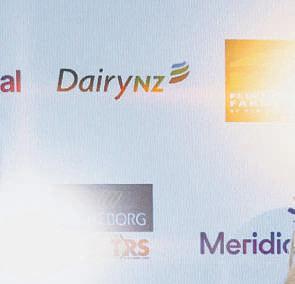





Judges were left wondering what more a Manawatū couple could do to showcase responsible dairying when they were recognised for their commitment to sustainability at the National Dairy Industry Awards.
By Eve Hyslop.



People from all over the world have visited James and Debbie Stewart’s Manawatū dairy farm, Dairylands, but it was the Dairy Industry Award judges who decided they were podium-worthy.
The Hiwinui couple were awarded the Responsible Dairying Award at the National Dairy Industry Awards (DIA) earlier this year.
James and Debbie have been running their 580ha operation, Dairylands, for the last 25 years. The property was initially a sheep farm owned by James’ family which the couple converted into a dairy farm.
“My father was a sheep stud breeder so to get him in behind us was hugely valuable to our journey and my parents have enabled us to make the best of our opportunity,” James says.
The Stewarts started off with a small herd of 108 cows when they converted part of the farm, slowly developing it with a neighbouring block to then milk 250 cows and finally reaching their herd of 800 with four additional pieces of land
Over those 25 years, James says he has seen a lot of change, particularly in the environmental space. He says that part of this change has included the development of on-farm tools and technology that has supported farmers to meet environmental expectations and regulations
He says fundamental to instrumenting that change are the people.
“That’s needed to make sure that we’ve got good people sticking in the industry because that’s what the future is about, the people.”
Debbie says key to facing change is an ability to adapt, which has allowed them to make larger tasks more achievable
“We’ve always looked outside the gate a bit at trends, we saw it on the environmental front at first and you have to always think, what’s the next thing coming our way.”
Their way of looking outside the gate has included establishing an effluent

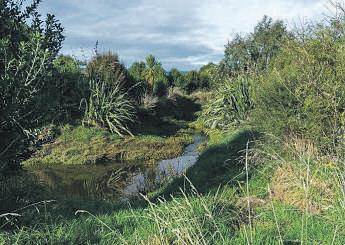
TheStewartshaveimplementedabout3kmof streamsideplantingintotheiroperationand haveplantedmorethan12,000nativetreeson theirproperties.
nutrient plan, tree planting, water recycling, 3km of streamside planting and plans for a walkway that connects to the Hiwinui township for on-farm visitors.
James said that while they established the more environmental side of things in the family business, it has always been brewing in the background.
“My grandfather used to plant a lot of trees, my father carried that on hugely and we’ve just integrated that into our dairy farming.”
More than 12,000 native trees have been planted in sensitive catchments over the last 10 years, and their farm policy is to plant 1000 trees a year.
Situated separately from the dairy farm on the Stewarts’ property is a luxury lodge owned by James’ parents, the Hiwinui Country Estate. The estate has welcomed guests from Spain, Germany, Japan and all over the world who have had a glimpse into dairy farming through farm tours.
Educational sessions have been held on the farm for schools and Palmerston North visitors with the help of Fonterra.
The Stewarts built a new milking shed eight years ago, incorporating an education room onto the side of it which tells their family history and educates visitors on dairy farming through Fonterra-provided information and a
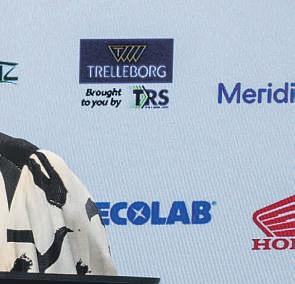



DebbieandJamessaytheylovethemanagement systemofadairyfarmandthelifestyleitbrings.




viewing window into their milkings.
The Stewarts said it was easy to get stuck in the status quo, as there was no one-size-fits-all approach to dairy farming.
“One of the challenges was not getting bogged down by industry targets and what other farmers were doing.
“We ended up just taking a look at our own land, farming to our conditions and to our soil type and to the way we think is better balanced for our whole operation,” James says.
While dairy farming comes with its challenges, Debbie says the reward is an ongoing one.
“We have a blank canvas and we get to look after this beautiful land and it’s a responsibility but it’s a real privilege,” Debbie says.
Although he grew up on a sheep farm, James grew to enjoy the routine
management of a dairy farming system.
“Every day you go out and milk the cows and you’ve got a product in the milk vat that day and you’re paid on the 20th. So I quite like the structure,” James says. Both with farming backgrounds, they always admired the working lifestyle of dairy farmers.
“I was always destined to be a farmer and Debbie is off the land herself so it was a great fit,” James says.
The judges of the award were left wondering what more Debbie and James could have done to showcase responsible dairying. However, the couple say there is always more to learn.
“You can always do more, you can always learn and grow and introduce things that will better your farm for the future. So I think we’re always going to be learning and growing,” Debbie says.
Kirwyn Ellis is over the moon about his dairy award win, writes Bethwyn Littler.
Kirwyn Ellis likes to describe himself as a sponge.
“I am so young and everyone has so much information to offer so I’m soaking up as much information I can.”
Ellis, the 20-year-old herd manager of 475 cows at Pirongia, Waikato, was awarded the 2024 Dairy Trainee of the Year at the New Zealand Dairy Industry Awards Gala dinner in Queenstown earlier this year.
He said he is over the moon about his win.
Ellis was described by the judges as having a genuine care for those in the community and taking his role as guardian of the land very seriously.
Head judge Mark Laurence, from DairyNZ, said Ellis’ heart was with his community.
“He was a consistent top achiever across all categories and I have no doubt he will represent the industryvery well with his new title.”
Ellis said it was growing up in a
strong community which led him to be the man he is today.
“I understand how people within a community give so much and expect so little. I really aspire to be like that.”
During Cyclone Gabrielle last year Ellis rallied his local community to donate three trailer loads of farm supplies to farms in Hawke’s Bay.

“It was really eye-opening for me, not just seeing the damage from the cyclone, but being part of my community’s generosity.”
He is looking forward to a future leadership role in the dairy awards in the coming year. “It will be my first chance to help and mentor people. This is going to be a focus for me long-term, keeping as many good people in the industry as possible.”
Ellis’ ultimate goal is farm ownership. However, he is philosophical about his journey.


“I recognise where I sit currently in the industry and understand the steps it will take. But it is what I’m aiming for, trying to get better every day.”
Ellis said he feels a responsibility to preserve the land he works on and improve it for future generations.
“Preserving the land has always been a priority for farmers. If I do eventually own a farm I know it will not be forever. I will only have it for the period of the farm’s life, then I have a responsibility to pass it on better than I found it.”
Judge Enda Hawe said Ellis stood out clearly among a group of excellent finalists.
“He’s a very good role model and has pride in the industry.”



The Taranaki living soil and plant food business is expanding overseas, having caught the attention of a German exporter. By
ATaranaki couple are expanding their soil and plant food business after signing a deal with one of the world’s biggest producers of potting mix.
Herbi, run by Frank and Michelle Lachmann, has secured a 10-year franchise deal with Floragard to sell natural living soil and natural fertilisers in Europe.
Floragard produces premium potting mix and growing substrates and exports its products to more than 120 countries worldwide. Spokesperson Thomas Büter said the German company was excited to partner with the Taranaki duo and draw on their expertise in living soil and natural fertilisers.
Regenerative growing was the future of gardening, he said, and the deal would strengthen Floragard’s position in the home gardening market.
Kiah Radcliffe
.
Taranaki and had developed regenerative growing and all-natural fertilisers. That expat was Frank.

“The trials we’ve conducted confirm that Herbi’s living soil and all-natural fertilisers are some of the top-performing products on the market.”
Frank Lachmann, Herbi’s managing director, said he and Michelle were thrilled that their products would soon be available in Europe.
The move would allow more home gardeners to experience “smart growing with healthier produce grown naturally and sustainably”, he said.
When asked how the deal came about, Michelle Lachmann said it was a case of mutual connection. Floragard had heard of a German expat who was settled in
HortNZ chief executive Nadine Tunley says growers have given the organisation a mandate and now they will deliver.
Every six years, fruit and vegetable growers get an opportunity to have their say on whether they wish to continue funding Horticulture New Zealand (HortNZ).
That’s because HortNZ operates under the Commodity Levies Act, which provides the legislative framework for levies used to fund industry-good activities for our sector and others.
Holding a referendum means HortNZ is accountable to the 4200-plus growers across the country for the work we do to support the industry.
The results showed 97% of growers by value voted to continue support of HortNZ

Word got to the Lachmanns and they reached out to Floragard, Michelle said.
“We started Herbi to make regenerative growing easier for home gardeners, providing healthier plants and more produce in less time, without compromising quality.
“We also wanted to encourage our sons’ love of fresh fruit and vegetables It worked, and this deal is simply the cherry on top.”
The past three years have been busy for the family. Both Michelle and Frank left their permanent jobs to start Herbi in 2021 after developing their own soil and plant food at home in Urenui without chemicals or pesticides.
The business was led by Frank, who wanted to reignite his childhood passion for growing. For several years he had researched and studied regenerative growing and soil health before forming his own philosophy.

Together, they tested the natural soil and plant nutrition that Frank had developed on their 14-hectare property through multiple experiments.
Herbi’s success was instant, and soon after launching the business the couple leased a warehouse in Waitara to support their online shop and retail orders.
Under the franchise deal with Floragard, Herbi’s natural fertilisers and Herbi SOIL – Living Soil Growing Mix will be produced in Germany and sold in Europe by Floragard.

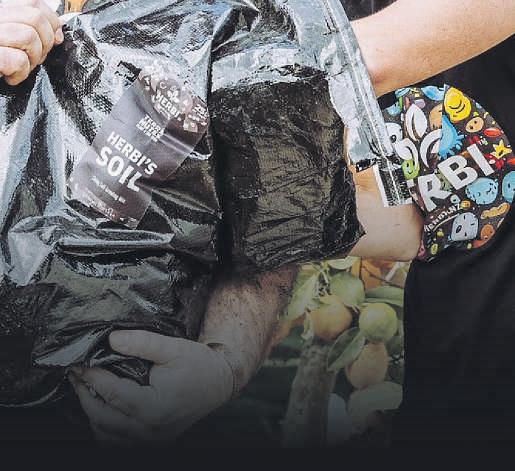


in the recent levy referendum, while 87% of growers by numbervoted to continue paying the levy.
Importantly, there was a large grower turn-out for this referendum, well up on the last levyvote.
This is a crucial decision that underpins HortNZ’s ability to advocate for growers and to deliver a wide array of essential programmes and services.
As chief executive of Horticulture New Zealand, I appreciate the mandate growers have given us. It reflects a strong and ambitious sector and a desire among growers for a unified voice.
This vote is also a clear signal that our community of commercial fruit and


TherecentHortNZlevy referendumresulted inagoodturnoutwith 97%ofgrowersvoting tocontinuesupport ofHortNZwhile87% ofgrowersvoting continuepaying thelevy MARTIN DE RUYTER/STUFF
vegetable growers want us to advocate on behalf of their interests. Over the next six years, we will work hard to deliver tangible results for growers
will strongly advocate for policies, resources, and business-friendly settings that will help our sector double the orchard gate value of production while enhancing the prosperity of our people and protecting our environment. I want to thank all those growers who, despite their demanding jobs, participated in the referendum. This renewed mandate aligns with the feedback we received from growers during our meetings with them earlier this year.

Our primary focus will remain on ensuring that growers’ voices are heard and providing the necessary support so growers can make informed decisions about their businesses. This certainty is essential for growers to confidently invest in their future operations.
To meet our sector’s ambitious goals, we
Growers have affirmed that HortNZ is on right track and that they support our key priorities, which include water availability, climate change adaptation and mitigation, and ensuring food security and the right to grow.
We have also heard growers’ calls for less duplication across different product groups and a stronger, united voice for the entire horticulture sector. With the certainty of continued levy support, we will continue to explore more collaborative approaches to maximise the returns on growers’ investments in HortNZ.
HortNZ has now applied to the Minister of Agriculture for a new levy order that will run for a maximum of six years from April 1, 2025. Our application includes the levy rate remaining at a maximum of 15 cents per $100 of sales. We look forward to working hard for all growers over the next six years.


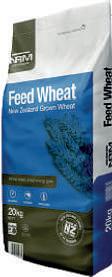






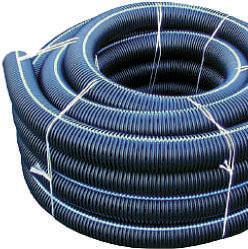
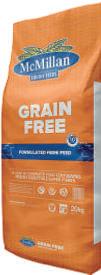
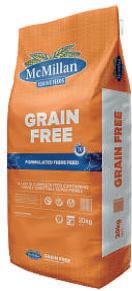
















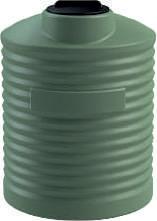









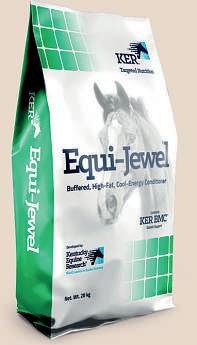


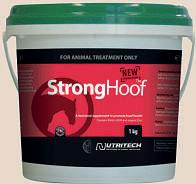







































































UK supermarket Morrisons faces a backlash from struggling farmers upset at the chain putting NZ lamb on its shelves.
By Eve Hyslop.
British farmers are retaliating against the trial sale of New Zealand lamb in a United Kingdom grocery chain.
The farmers are already struggling with high consumer prices and a tough season of wet weather and stock losses.
Morrisons supermarkets began trying the sale of New Zealand lamb in 39 of its stores in May, in addition to the 100% British lamb already stocked in its chillers
Federated Farmers wool and meat chairperson Toby Williams says that although New Zealand should recognise that the decision has caught British farmers at a vulnerable time, the two groups should take it as an opportunity to work together.
New Zealand and the UK have complementary seasons for sheep farmers, something which Williams suggests New Zealand should take advantage of.
“We should be looking to grow the amount of lamb eaten and supply lamb all year round with their British lamb during their spring and summer, then our lamb during our spring and summer and their winter and autumn when their production naturally drops off. It’s beneficial for everyone.”
The National Farmers Union (NFU) – the UK’s equivalent to New Zealand’s Federated Farmers – told the BBC that the decision was disappointing considering the amount of pressure on their livestock industry and that New Zealand lamb was “produced to potentially lower standards”.
Beef and Lamb NZ (B+LNZ) chairperson Kate Acland hit back at the latter claim, something B+LNZ has been disputing strongly in the UK.
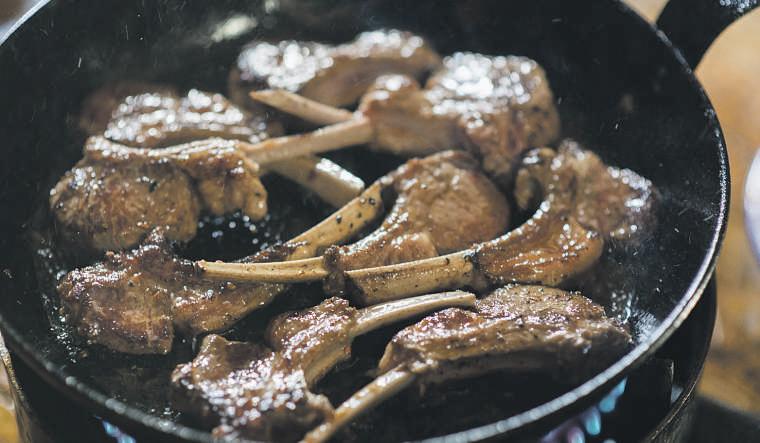
The claims were referencing a report by the UK, comparing New Zealand and UK farming systems, but which contained inconsistencies, Acland says.
NZ animal welfare standards are world class, she says.
This is backed up by written evidence from the RSPCA to the House of Lords stating that New Zealand is the only country with whom the UK is negotiating a free trade agreement (FTA) that has better animal welfare standards than the UK.
According to World Animal Protection ratings, New Zealand’s farm animal protection standards were a ‘C’; the UK’s were a ‘D’.
Overall, the written evidence stated that there was a broad equivalence in New Zealand and the UK’s animal welfare standards.
Williams says that New Zealand’s extensive farming systems make for less labour and high-quality pastures, providing efficient farming systems and, therefore, cheaper prices.



Morrisons said its opt-in for NZ Lamb followed responses from customers who “were very clear” that they wanted the supermarket “to sell lamb at a more accessible price all year round”.
“The blunt commercial reality is that NZ lamb is cheaper to source,’’ it said in a statement.
Commodity prices for lamb in the UK hit record highs in April, with the GB SQQ deadweight lamb price at £8.61/kg or NZ$17.95/kg, representing a 39.9% increase from the same time last year. UK lamb prices had since dropped to £8.23/kg on May 11.
While it may look like British farmers are getting a favourable return for their lamb, Williams says it’s not as beneficial in the grand scheme of things.
“We look at those numbers that they’re achieving and our eyes pop out of our heads. Round that to NZ dollars and they’re getting $18 a kilo and we’re getting $6 but we haven’t had the cost blow-outs that they’ve had.”
British farmers have been burdened with a wet and cold winter and early spring, the deaths of lambs, and potential threats of Bluetongue virus arriving from Europe in the summer.
“This has caused a lack of supply and inability for sheep farmers to keep up with high demand, on top of a labour shortage as a result of Brexit.’’
Most British sheep farming is intensive, resulting in more labour and investment. Inflation hasn’t helped these already-high inputs, which has caused further cost blowouts, Williams says.
It’s not just the difficult weather and input costs that factor into British farmers’ frustration with Morrisons, he says. “The real disappointment from the NFU is about market protection and looking after their farmers.”
A large presence on Morrisons website is the slogan “Backing British”, which has misled both consumers and farmers, fuelling the fire.
Higher commodity prices deter British consumers from buying lamb. They opt instead for cheaper or alternative products like pork, beef, chicken or, in this case, New Zealand lamb
Dose alldogswho reside near sheep with





Andrew Stewart is a fourth generation sheep and beef farmer in the Rangitīkeiregion. He and wife Kylie also run Rangitīkei Farmstay and The Mudder as successful diversifications on the family farm. He writes regular columns for Stuff.
Farming at this time of year can be a brutal beast Often you wake in the dark, work outside through cold, wet and windy weather and return home fatigued after the sun has set. But it is also the time of year when some farmers have a bit more downtime and can look at getting away from the farm for a break.
While many Kiwis look to escape to the warmth of Australia or the Pacific Islands, there are plenty of options closer to home. Recently I was fortunate enough to have two grandparents offer to look after our daughters and animals for a week so my wife and I could head down to the South Island. There are plenty of free options to enjoy the stunning scenery in the south of the country. One of these options is the Lake Dunstan Trail, the newest of the 23 New Zealand cycleways scattered around our country. This trail links the towns of Cromwell and Clyde and offers an insight along the route of the fascinating farming and gold mining history of the region.
We hired ebikes and return shuttle service and set off from Cromwell in -4 degrees to take on the 45km ride along Lake Dunstan to Clyde.
One of the biggest drawcards of this trail

for me was the ability to stop along the way at eithervineyards or the legendary floating cafe and burger boat on Lake Dunstan. There is nothing quite as comforting as a glass of mulled wine by a roaring fire, and many Otago vineyards offer this to all theirvisitors.
The ride itself is a triumph of engineering featuring a wide, all-weather trail hacked into the towering rock cliffs that surround Lake Dunstan. In places where it is too steep, they have built “clip on” boardwalks and bolted them into the rock faces, allowing cyclists to ride above the lake and around the cliffs. There is also a 90m long swing bridge and plenty of switch backs to both climb and descend. And we finished by riding past the towering Clyde Dam.
For me, this ride had been a bucket list item ever since I had seen photos of it some years ago. The feeling of completing this challenge, sharing it with someone special was a powerful and uplifting combination. The time away from the farm in new surroundings provided a mental and physical refresh that more than justified the dollars spent.
Farming is tough at the moment, but we should all give ourselves a break to allow ourselves a chance to reset. It doesn’t need to be a trip to Otago. It could be something as simple as a trip to your local beach or park. The value is in the change of scenery and the break away from the daily grind.
South Canterbury farmer and Beef + Lamb New Zealand (B+LNZ) director Nicky Hyslop says she found the process positive.
Our farm at Levels in South Canterbury recently went through a New Zealand Farm Assurance Programme (NZFAP) audit as well as accreditation for NZFAP Plus.
NZFAP and NZFAP Plus provide confidence and certainty to the millions of consumers worldwide that the meat and wool produced from New Zealand’s sheep, beef and deer farms is authentic, genuine, and safe.
Together, they provide assurances regarding integrity, traceability, animal health and welfare, people,
farm and natural resources and biosecurity.
Both voluntary nationwide programmes, they were originally developed under the Red Meat Profit Partnership (RMPP), a joint Primary Growth Partnership initiative between the New Zealand red meat sector including B+LNZ, banks, meat processors/exporters and the Ministry for Primary Industries (MPI)
For my husband Jonty and me, it was a valuable and productive exercise.
As a farmer, I’m not going to sugar-coat the commitment to making sure our paperwork was in order ahead of the audit.
However, overall it was a really positive initiative and one that is achievable for all farmers
My advice for those whose audit is due in the next 12 months is to start getting the house in order at least three months before your scheduled audit.
Doing it in a week will drive you crazy. Our auditor was constructive, pragmatic and able to share ideas from others to further improve how we pull together data and really highlight what was important.

I know some farmers will be wary about the process, but it’s important to understand you don’t need a plethora of electronic software packages to demonstrate good record-keeping.

Many farmers will already be taking proactive action on farm. All the templates for records required are available online and can be entered electronically or in hard copy. While using FarmIQ or Resolution makes record-keeping a little easier, other solutions exist. A friend is using an Instagram page for their farm and recording all key farm events on this Maps are the centrepiece and can be created using Google Earth. Our meat processing companies are providing excellent support throughout this process.
NZFAP Plus does require additional demonstration of sustainability actions but most farmers will be doing this – it just needs some record of doing so.
Securing NZFAP and NZFAP Plus accreditation means we will now be eligible for a premium for prime lambs and cattle from our processors.










The Harvested Wood Material Levy is paid by every plantation forest owner in New Zealand when their trees are harvested The Harvested Wood Materials Levy was first established in 2013 after extensive consultation with the industry.
Money raised by the levy is used to support work for the collective benefit of the industry. The levy supports research and development work, health and safety initiatives, biosecurity protection, forestry advocacy and promotion and a host of other work programmes to help support forest growers and New Zealand forestry.
At present, every tonne of wood harvested from a plantation forest is levied at 33c per tonne. The levy is collected at the port or sawmill and the funds and work programme are managed by the Forest Growers Levy Trust (FGLT)
It is proposed that the levy rate be potentially increased in the next sixyear levy term to support a larger work programme and do more to invest in the future of New Zealand forestry and meet the new challenges facing the industry.
The industry is required by legislation to vote every six years to decide whether to continue with the levy and at what rate. The vote will be held from October 1st to 31st this year.
Over the past two months, the Forest Growers Levy Trust (FGLT) has completed a series of regional roadshows around the country on the LevyVote 2024. These consultation sessions are an opportunity

for all potential levy payers to have their say into what happens with the levy and learn more about the referendum process. They have been speaking to forest owners to get feedback on the levy and discuss potential changes heading into the next six-year period.
In-person meetings are not always convenient for forest owners, and so they are now running a series of webinars to
make sure every potential levy payer can have their say and vote in the October referendum.
Levy Vote 2024 Webinar programme:
■ Wednesday, July 17, 3pm-5pm: Environment and risk webinar https://us02web.zoom.us/j/86774117813
■ Wednesday, July 24, 3pm-5pm: Small-scale grower’s webinar
https://us02web.zoom.us/j/84877088384
■ Wednesday, July 31, 3pm - 5pm:
Research and development webinar
https://us02web.zoom.us/j/86729746300
Choose the webinar that suits your schedule and use the relevant link above. No RSVP is required. Zoom links for each webinar will also be posted on the FGLT LevyVote 2024 website.


450mm $ 665
525mm$ 798
600mm $1075
750mm $1550
75mm $8.65 permetre
90mm $11.30 per metre
Incorporating the strength of corrugated outer shell with the smooth inner wall to optimise hydraulics
Full range of fittings available
Rubber ring seals available forwater tight joins
Ratedto8Bar
110mm $14.50 per metre 90mm $11.30 per metre
Advantages:
•Suitable for above and below ground use
• Suits camlocks & compression fittings 3M lengths available
•Suitable for camlocksand compression fittings
•Lilac stripe identifies non potable water pipe
•Constructed of super strong PE100 pipe

Available in 50m and 100m coils

Advantages:
• Constructed of flexible thick wall LDPE pipe
• Kink resistant
• Now available in 75mm
63mm x50m $263
63mm x100m $525
75mm x50m $410


Rural Direct’s spiralwound PE100 pipe with joining collar
1000mm ID x6m$2915
1200mm ID x6m$3595
1500mm ID x6m$4855
1800mm ID x6m$6475



● July 17, DairyNZ Industry meeting, Marton/Rangitīkei
This is a great opportunity to hear from your local industry professionals DairyNZ will have a number of speakers giving a timely update in their respective fields, so bring your questions. The organisation will also give an update on its refreshed strategy and what this means for moving forward.
Info at dairynz.co.nz/events
● July 19, DairyNZ Robotics Field Day, Kimbolton/Apiti
Join DairyNZ on farm with John Martin, robotic dairy farmer, to look at the farm system and how robots have played a part in this successful business.
Info at dairynz.co.nz/events
● July 18, B+LNZ Trees Within Farms: Opportunities With Carbon, Raetihi Trees are an important part of pastoral-based farming systems
This workshop will broaden your understanding of the value of trees within farms, and how to take advantage of carbon market opportunities.
Info at beeflambnz.com/events
● July 23-24 B+LNZ Fluke Facts workshops: Understanding Liver Fluke, Hokitika and Westport
In 2023, Andrew Dowling (BVSc) submitted his thesis to Massey University on the prevalence and production effects of liver fluke (Fasciola hepatica) in New Zealand cattle, including evaluation of diagnostic tests. He now returns with Beef and Lamb New Zealand to share information and his findings.
Info at beeflambnz.com/events
● July 25, Dairy Women’s Network
Coffee & Connect,Inglewood
It has been a while since the last gathering, so join Dairy Women’s Network for a cosy get-together over a coffee. This is a perfect opportunity to catch up with friends or meet new faces in your area, bring along the kids or any family members; the door is open to anyone who wishes to attend.
Info at dwn.co.nz/events/
● July 25, Agrihealth
Mastitis Management,Otautau
Practical advice on how farmers can save money, produce more milk of higher quality and achieve milk premiums. Aimed at dairy farm owners and managers interested in practical tips and tricks to improve their mastitis management and make more milk of higher quality.
Info at agrihealth.co.nz
● July 25, B+LNZ
West Coast Women In Agriculture: Sowing Seeds ForSuccess, Greymouth
Sowing Seeds For Success is an opportunity for all women connected with agriculture and the rural sector to come together to celebrate some of the amazing and purpose-driven women from the West Coast. To be inspired and feel supported on your own journey of farming, family and self.
Info at beeflambnz.com/events
● July 31, B+LNZ
Regional Showcase: Turning YourPresentValue Into Your FutureValue,Timaru
Join an exciting speed dating-style session featuring real-life examples and experiences in the sheep and beef industry. Our line-up of expert speakers will assist with career starting, stepping back and everything in between Info at beeflambnz.com/events
● August 1, B+LNZ
Farming ForProfit field day: Refine and Re-define,Hastings
Join Beef + Lamb New Zealand at Whakamarumaru for a field day dedicated to preparing for the upcoming spring. This is the perfect opportunity to evaluate and potentially refine your farming system ahead of the new season. “Thinking about change, now is the time.”
Info at beeflambnz.com/events
● July 5-6, DairyNZ
Enabling NewZealand Primary Product Trade Options Into The Future,Rotorua
Find out what current science is being carried out and the future direction of science from Scion, AgResearch and DairyNZ.
Info at dairynz.co.nz/events/
● August 7-8, B+LNZ
Farming ForProfit Day: The NewEra Of Sheep Performance – Adapting To Drench Resistance and Parasite Challenge,Gisborne and Wairoa Drench resistance seems to be showing up everywhere; it is putting sheep performance at risk and farmers are having to learn to deal with it. Come along and e part of the discussion, learning how experienced farmers are adjusting to the new normal.
Info at beeflambnz.com/events
● August 8, B+LNZ
Ladies’DayOut: AgriGals ‘ACut Above’,Tasman
This event is designed to celebrate and support ourvibrant rural community, offering a perfect blend of upskilling, cooking and socialising. Beef + Lamb NZ is thrilled to have Philippa Cameron, from What’s For Smoko, as a guest speaker. The renowned station cook at Ōtemātātā Station in the Waitaki Valley, will share her inspiring journey and insights. Registration is essential.
Info at beeflambnz.com/events
● August 9, B+LNZ
A Feast Between Two Beers' evening, Southland
Enjoy a night to feast between two beers with the B2B podcast founders Seamus Marten and Steven Holloway. Today, Between Two Beers is New Zealand’s most popular long-form show, with more than two million lifetime downloads and an average audience of 100,000 listeners a month.
Info at beeflambnz.com/events
● B+LNZ
2024 Director Roadshow, various dates and locations
Come along to hear insights and updates relevant to you and provide input to help shape the future of Beef + Lamb New Zealand and our sector. It’s holding a series of informal sessions around New Zealand from July to September covering:
How B+LNZ’s work is now more strongly focused behind the farm gate on farmers’ productivity and profitability; and testing our current thinking on key policy issues, particularly on freshwater and climate change. And more.
Info at beeflambnz.com/events
● B+LNZ
Mastering Your Financials workshop, various dates and locations
Together with the Farm Focus team, Beef + Lamb New Zealand has designed a workshop to support you as farmers to understand your financial position and how to adapt and grow your farming business with confidence.
Info at beeflambnz.com/events
Registration is essential for many events. Check out the various websites for more events and information.


Withtheimminentarrivalofthis season’syoungstock,nowisagood timetoassessyourcalfdrenching programme
Parasitesarealeadingcauseofillthrift andpoorgrowthinyoungstockin NewZealandsystems.Ifnotcontrolled, effectivelypoorgrowthduetoparasitism canresultinsignificantlong-term productionlosses
Alongsideothermanagementpractices, anappropriatedrenchprogrammewill helptolimitthenegativeimpactsof parasitesinyouryoungstock.Bygiving aneffectivedrenchattherighttime, youcanpreventproductionlossesfrom parasitismandlimitthenumberofeggs beinglaidonpasture,reducingfurther infection.
Whenchoosingdrenchesthreefactors needtobeconsidered
•Oraldrenchisbest,especiallyinyoung stock.
•Calfweight:Calvesunder100kgare susceptibletoAbamectintoxicityso drenchcombinationsincludingthis shouldnotbeusedinthisweightgroup
•Age:cattleunder12monthsrequire LevamisoletotargetCooperiaworms, soallcalfdrenchesneedtocontainthis drenchcomponent.
Calvesareunlikelytohaveasignificant wormburdenuntiltheyhavebeen onpastureforaminimumoffour weeks. Whenconsideringafirstdrench incalvesunder100kgVETMED’s CombomaxcontainsOxfendazoleand

Levamisolemakingitbothaneffective andsafechoiceforthisweightgroup Oncecalvesaregreaterthan100kg, anoraltriplecombinationsuchas VETMED’sTriplemaxdrenchshould beused.Althoughanoraldrenchis preferredincattlelessthan12months ofagetheremaybetimeswhenan oraldrenchisnotfeasible.Incaseslike this,aninjectableorpour-oncouldbe considered.However,Levamisolemust stillbeincorporatedtotreatCooperia AnoptionforthiswouldbeVETMED’s
Dualmaxpour-onwhichwillalsotreat lice
Allowingaminimumof28daysbetween drenchesisimportanttogivetimein thewormlifecycleforapopulationof “undrenchedworms”tobepresentfor refugia.Takinga10-daypost-drench fecaleggcountcanaidinmonitoringthe effectivenessofthedrenchesyouare using.
FECsandtargetweightgainscanbe usefultoolsinhelpingguidedrenching decisions.
Topromotethesustainabilityof drenchesitisimportanttoconsider theothercomponentsofaparasite managementplanotherthandrench alone.
•Blocksgrazingonlyyoungstockareat highriskfordevelopingresistanceand wherepossibleincorporatingoldercattle orsheepto“cleanup”thewormburden takesthepressureoffdrenchbeingthe soleparasitemanagementtool
•Maintainingyoungcattleonhigh grazingresidualsandtheuseofcrops canhelptoreducethenumberof infectivelarvaebeingeaten.
•Wellfedcalveswithadequatemineral levelsarelesssusceptibletoparasitism andbytheageof12monthswillhave developedarobustimmunesystem allowingthemtocopewithaworm burdenandrequireminimaldrenching TolearnmoreabouttheNZ-maderange ofVetmeddrenches,visityourlocalPGG Wrightsonstoreorvetclinic.
Registered pursuant to theACVMAct. 1997. Nos. A10966, A11076, A10786, A10760.

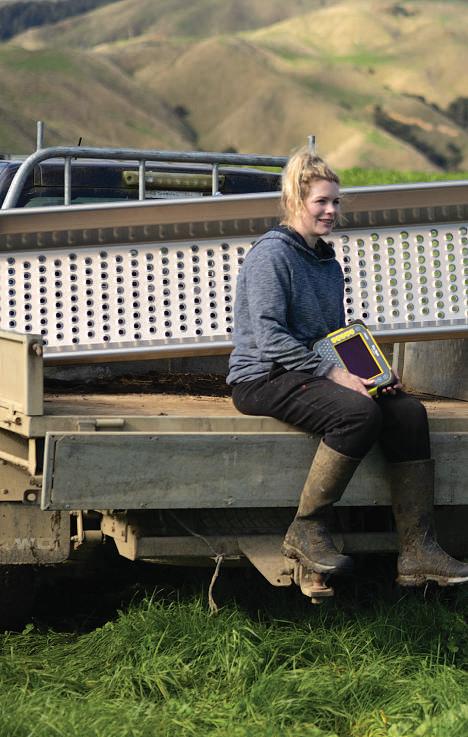

















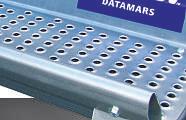












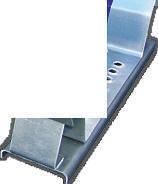











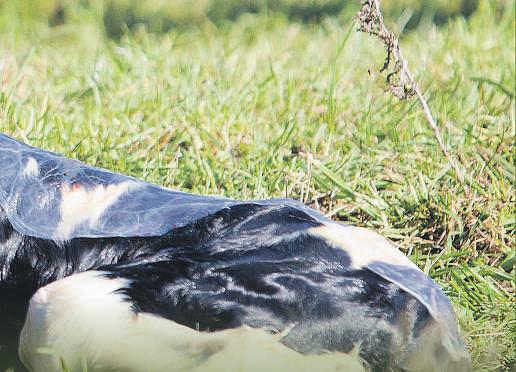

Being prepared for the busy calving season means you won’t be scrambling at the last minute to get your kit together.
Planning and preparation contribute to a successful calving season. Help your farm get set up early for a smoother calving season
Knowing your plan and ensuring that you have everything you need prior to calving will help to reduce stress, keep you on track from the get-go, and create better outcomes for your team and your animals.
Pre-calving checklist
■ All team members up to date on farm policies and what to expect during calving
■ Spring rotation planner completed and visible to the team
■ Supplies of metabolics, electrolytes, navel spray etc. on hand or ordered
■ Calf trailer and feeding equipment clean and disinfected
■ Calf shed clean and disinfected and all repairs and maintenance done
■ Designated sick pen set-up
■ Fresh bedding laid in calf shed
Calving kit prepared
Calving kits
Well-stocked calving kits will save you making trips between the paddock and the shed. Keep your calving kit at the gate of the springer paddock or in your farm vehicle. Make sure that everyone knows where they are and can access one easily.
Tape a checklist of contents inside
the bucket and have a team member in charge of making sure it is restocked regularly.
Calving kit contents
■ Bucket with a lid to contain kit
■ Metabolics (Clearly labelled milk fever treatments and starter drench).
■ 3 calving ropes or chains (Remember to clean after each use)
■ 2 litre container of lube (A plunger pump is an easy way to dispense lube).
■ Towel and soap for cleaning hands
■ Notebook and pencil (A pencil will still work in wet conditions, unlike a pen)
■ Ear tags or other calf identification system (Pre numbered tags save time and reduce recording mistakes).
■ Spray paint - red plus another colour (Red can indicate a warning. E.g withhold milk. Communicate this with staff).
■ Gloves
■ Head torch and spare batteries
■ Iodine spray for navels - pre-mixed with water (Do not use teat dip as an alternative)
■ Key contact numbers (Vet, manager on laminated sheet).
■ Calving intervention guide
■ Food/energy bars
Springer Mobs
The transition period is a significant time for the cow, and how you manage your cows as they prepare to calve can impact on how quickly they recover post-calving. Here’s a few tips to help

Farmers should plan to have a well-stocked calving kit with all the essentials ready to go so they are not spending valuable time looking for items when the time comes.
you set your plan for calving:
■ Draft dry cows into springer mob regularly
■ Check springers often to help identify cows having trouble
■ For cows at or above body condition score (BCS) targets, restrict feeding to 90% maintenance. For cows below BCS targets, continue to feed at 100% maintenance. See feedright for more info on nutrition
■ Avoid high potassium (K) feeds to
help minimise down cows – test your springer paddocks over winter to identify suitable paddocks
■ Supplement with magnesium 2-3 weeks prior to calving
■ Ensure appropriate minerals are being provided – develop a plan with your nutritionist or vet according to your farm needs.
Source: DairyNZ
A good start in life for calves is a key for successful stock rearing, writes Sonita Chandar.

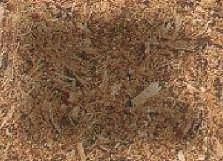

With more than five million dairy and bull beef calves born in 2023, calf rearing makes a significant contribution to agriculture.
Calves that are reared as replacements must be well-reared so they achieve good lifetime productivity. Generally, these calves are bred from the best genetics in the herd.
There is a variety of calf rearing systems farmers can use but, whatever the system, there are some fundamental principles that are the foundation of all successful rearing.
The main aim of any system is to have significant rumen development by 5 to 8 weeks of age. This will enable calves to be weaned off milk but continue to achieve good daily growth rates of 0.7-1.0kg.
Calving
Cows should be in the best possible condition at calving and be eating a diet that is adequately balanced in nutrition to ensure they produce high-quality colostrum.
Calving cows on dirty feedpads or muddy paddocks should be avoided where possible as newborn calves are susceptible to infections and environmental stress.
Calves have the highest rate of sickness and death of any age group on the farm.
It is vital to their survival and wellbeing they are not exposed to the elements or less than ideal conditions so if it can be avoided, it should
Calves should be removed from the paddock as soon as possible after birth and preferably, within 12 hours.
Navels should be dipped or sprayed with iodine and if a need has been identified, cord clamps applied.
Clamps help to prevent infections from entering and travelling up through the navel and speed up the drying process
Housing
Calves should be kept indoors for at least three weeks in facilities that are clean and
dry. Individual pens are ideal but often impractical.
A more practical solution is to have pens which can hold 10-15 calves. Pens should be separated by solid dividers to prevent contact between the different groups.
Calves should be housed with similar aged animals for effective group management. They should have adequate space –two to three square metres per calf – as overcrowding can cause stress and increases the risk of illnesses.
Pens should be well ventilated at higher levels but free from any draughts at lower levels.
Good ventilation will prevent a build-up of ammonia.
Veterinarians say drainage is essential so calves are not sitting in cold, wet conditions.
The base should consist of metal or gravel and be covered with a deep layer of sawdust, wood shavings or bark which should be topped up or changed regularly.
Another important thing is to have an isolation pen. Any calf that is sick or showing signs of illness should be removed immediately to prevent any diseases from being passed on to other calves.
Ideally, these animals should not be returned to their original pen, but remain in the sick pen for the duration of the housing period.
All pens should be cleaned and thoroughly disinfected with virkon or something similar on a regular basis.
At birth, calves have no antibodies so it is essential that newborns receive at least two litres of colostrum within the first six hours and further two litres within 12 hours.
This colostrum should be fresh and from the first milking of healthy cows that are milked within 12 hours of calving.
Colostrum provides an important source of specific immunoglobin antibody protection. This helps protect calves against
a variety of bugs, non-specific immune factors and nutrients.
An estimated 40% or more of dairy calves have total or partial failure of colostral transfer. This can lead to poor growth, illness and even death. Good-quality colostrum, ingested within 12 hours of birth, has long-term positive impacts on growth, health and production
Tests are available to determine whether a calf has had adequate colostrum which is especially useful if the calf was born overnight and not removed from its mother for several hours.
A blood sample can be collected from calves aged from 24 hours to seven days to measure the level of colostral transfer.
The feeding of calves can be either ad libitum or restricted.
On milk replacement, calves need to be fed 600-800grams/day of milk powder at 20MJME/kg of milk powder. The mixing strength can be increased to lower feed volume and encourage earlier and more solid feed intake.
Maximise milk intake to 15-20% body weight. For example, a 40kg calf should get 6-8l milk which needs to be split over two feeds per day for the first four weeks of life.
Vets say a common mistake is to cut feeding levels in the first two weeks to avoid diarrhoea. In reality, this results in undernutrition, puts the calf under undue stress and can lead to scouring.
Calf starter pellets or meal can be used immediately and should be 18% protein and contain a coccidiostat As soon as calves are on pasture, a 16% protein meal is adequate.
Good quality calf rations are formulated to maximise rumen development and forages such as hay and straw do not stimulate rumen development and may lower pellet and meal intakes so should be avoided if possible.
Meal should remain a part of their diet until they have a body weight of about 100kg.
Target weaning weights differ for jerseys and Friesians but wean off milk over more than 10 days gradually reducing volume of milk or decrease from twice daily to once daily feed so calves increase meal/pellet intake (18-20%protein) to at least 1.5kg during and after weaning off milk. Calves weaned off milk need to be minimum 8 weeks old, greater than twice their birth weight and have been eating meal for several weeks and minimum consuming 1kg/day.
Before shifting them out onto pasture, keep them indoors for a few days to identify any calf not eating sufficient meal.
Once weaned off milk, calves should then be fed good quality pasture and continue on 16-18% protein meal until at least 12 weeks of age.
Paddocks should provide shelter as wind and rain can cause stress and illness in calves. Natural shelter such as trees or hedges is ideal but temporary shelter erected from hay or straw bales can also be effective. Shelter cloths or plastic should be avoided as calves will chew these.
Farmers have greatly reduced their bobby calf numbers and although bobby calves may not be as important as replacements, they still require the same level of care and attention as they are a source of export income for the dairy industry.
The Animal Welfare Act is recognised throughout the dairy industry and sets out guidelines. Calves must be at least 4 days old, have worn feet pads, a dry, withered navel and be clean and free of disease or injuries.
Importantly, bobby calves must be fed only milk. Any antibiotics found in their system can lead to huge penalties for the farmer. All calves must be tagged and a declaration form for each mob completed prior to pick-up.




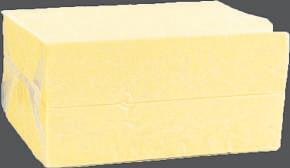



A Northland couple are on a mission to ensure people have a natural choice when it comes to personal grooming and skincare, reports Steve
AMacmillan
.
Northland beekeeping couple who are using their honey to make skincare products, are mighty passionate about mānuka and all it produces.
Benji and Katie Raumaewa own a 10-hectare block at Maungaturoto, Northland, from which they operate their businesses Hillside Honey and Mānuka Essentials.
Despite the downturn in New Zealand’s honey sector, they are still optimistic the market will come right, which is why they are increasingly focused on niche products.
With that in mind, Mānuka Essentials is their latest venture, which they purchased a year ago to expand their product range.
“We’ve started by taking the rubbish out of personal care to make sure people have good, effective options for natural skincare and grooming,” Katie says.
The products, which range from kānuka and mānuka oil to a numerous skin oils, beard oils and shave bars, are stocked in salons in New Zealand and Australia, with more expansion looming.
In fact, they are so stoked to be named the 2024 winner for the Best Beard Oil at the prestigious Beard Awards in Auckland, having also starred in a recent ANZ promotional video about rebuilding their business after losing hundreds of hives in Cyclone Gabrielle.
Their personal care products from the Mānuka Essentials range use plant extracts such as East Cape mānuka oil – which has strong antibacterial and anti-inflammatory properties – and is a key ingredient.
Katie says Mānuka Essentials is also something of a social enterprise on a mission to help bring native forests back to New Zealand. “Trees are the lungs of this earth. But unfortunately, they are being chopped down at an alarming rate. If we want our children to grow up in a world where the environment prospers, we are going to need more forests.
“Throughout many parts of the country, we are experiencing significant land erosion, polluted streams and biodiversity loss that threatens our ecosystems.
“Which got us thinking – what if there was a way that we could play a part in bringing native forests back to New Zealand?
“Mānuka is a phenomenal plant that is starting that journey in much of the country. We are certainly seeing that in our catchment with the work Kaipara Moana Remediation is doing working with land owners to reduce siltation and sedimentation in the Kaipara Harbour,” she says.
They work with the Reforestation Fund to help accelerate the reforestation movement in New Zealand, through co-funding high-impact projects that result in more native trees being planted.
Katie says 50 cents from every Mānuka Essentials product sold is contributed to this fund and over time they hope to help bring native forest back to New Zealand’s farmland in a way that will continue to serve the people and environment for generations to come. That starts with planting mānuka near waterways, wetlands and erodible hillsides because that is the start of turning land back into forest
“We all know that New Zealand, and certainly the land where we are in Maungaturoto, was covered in forest until humans arrived. These plants nourished the land, provided homes for a diverse range of bird life and supported healthy ecosystems.”
The duo clearly have a strong connection to the land and all it provides, with a particular focus on native flora and fauna to

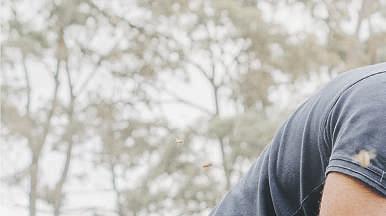

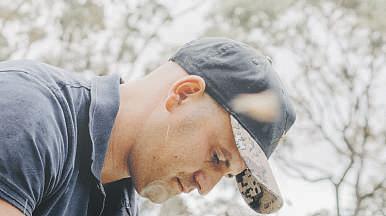













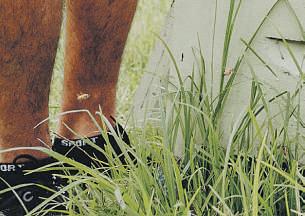


ensure the health of their beehives.
Benji says their honey is harvested from a stronghold of 1000 hives within Hillside’s Golden Triangle, from rugged Northland down to the hills of Whanganui and across to some wild remote sites in Taranaki.
The growth of their honey business has been steady. Benji started off with 10 hives in 2015 which he grew to 300 hives in the first year while still working a fulltime job. The following year they decided to take leap of faith and went out on their own
Benji has always had a love for the land and the outdoors and wanted to incorporate that into his work. When the


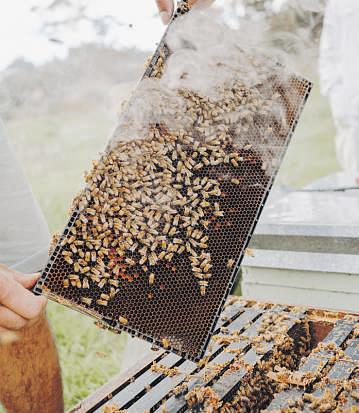
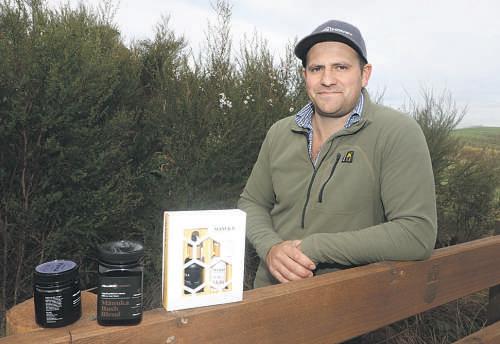


Benji says. “We work with landowners to make sure our bees are nourished yearround so our hives are strong and always ready to produce good volumes of high quality honey.
“We’re proudly family-owned and operated and do everything by hand, the placement of our hives to careful extraction of the liquid gold through to bottling.”
In fact, Hillside Honey has a purposebuilt extraction facility at its Maungaturoto Depot, which is harvesting up to 50 tonnes of honey from Hillside’s hives and more from other beekeepers from within Northland. And there is scope for expansion on the 10ha block, which is also home to a couple of dozen finishing cattle.
opportunity to buy those first few hives arose, he grabbed it with both hands and there has been no looking back.
“Our focus is on efficiency and maximising production with the resources we have. We will expand our range of potted honeys further and extend our products into more areas around the world
“The farms we harvest our mānuka honey from are remote, untouched and beautiful but often with access only possible by 4WD, ATV and helicopter,”
“The mānuka flowering season is very short so we only get a small window of opportunity to get our harvest right to collect maximum yields of that liquid gold.
“We’re all about creating long-term relationships with our landowners to maximise their income off their mānuka blocks. Our beekeepers love what they do and that makes a big difference to our teamwork. All our honey is tested at an independent laboratory, guaranteeing the authenticity of the honey we produce, which is important.”
Longhoursofstandingonhard,cold concretecanstraineventhestrongest farmers—andtheircows.Recognising thischallenge,MattaProducts,the companybehindNewZealand’ssafest, softest,andmostsustainableplayground matting,hasintroducedarevolutionary productdesignedtosignificantlyease theburdenonfarmers’bodieswhilethey work
IntroducingWorkMattaExcel—a truegame-changerforNewZealand’s agriculturalmarket.Broughttoyou byMattaProducts,apioneerin designingandmanufacturingdurable workandplaysurfacesforover30 years,thisinnovativemattingsolution embodiestheentrepreneurialspiritand commitmenttogrowththathasdriven thecompanysinceitsinception. FoundedbyMurrayScottin1992, Mattabeganwithasingularfocus: producinghigh-qualitymatsfora varietyofmarkets.Fromthesehumble beginnings,thecompanyhasgrowninto thego-tosourceforsuperiorsurfacing solutionsindiverseenvironments,from agricultureandindustrialspacesto playgroundsandfitnesscenters.Today, Matta’sreachspansNewZealand,the UK,NorthAmerica,andAustralia,with theirmattingproductsalreadyembraced byagriculturalsectorsinNorthAmerica andAustralia.
Now,currentownersBrentHarrisand DylanMatthewsareconfidentthattheir high-performingmattingisperfectfor

Easilyinstalled and hardwearing, Work Matta Excelisanergonomic,mid-compression flooring solution ideal for agricultural environments.
NewZealand’sagriculturalindustry too.WorkMattaExcelisdesignedfor workerswhostandonhardfloorsfor longperiods,aimingtoreducefatigue, relievejointpressure,andminimiseleg andbackstrain.Excel’sergonomic,midcompressionflooringsolutionisideal foragriculturalsettings.Itsopen-surface tiledesignallowsexcellentairflowand drainage,perfectforhosingdownand dispersingdebris-ladenwater,suchasin adairyshed
WhatsetsMattaapartinthecrowded agriculturalmattingmarketistheir useofdurablePVC,whichlastslonger thanrubber.“PVClastslongerthan

rubber,whichtypicallyneedsreplacing afterjustfiveyears,”explainsDylan.But perhapsthestrongestfocusforMatta istheirunwaveringcommitmentto sustainability.Recyclinghasalwaysbeen attheheartoftheirethos,andthey’ve perfectedthetechniqueofturningwaste PVCintohigh-qualityproducts.Matta nowcollaborateswithseveralrecycling initiativestosourcerawmaterials, producingproductsmadefrom85% recycledcontent.
Todate,Mattahasrecycled60million kilogramsofwastePVCandrubber, sourcingfromelectricalcableinsulation, cleanhospitalwaste,healthcare manufacturingwaste,roadcones, inflatablepooltoys,andcertaintypes ofgumboots.In2022,Mattateamed upwithAgrecovery,aruralrecycling programthathelpsfarmersrecycle agriculturalwasteforfree.Itemslike ElancoMetabolicSolutionbags,plastic containers,andbalewrappingcanbe

disposedofatFarmSourcestoresacross thecountrythroughtheAgrecovery scheme
Elanco’smetabolicbags,madefromPVC, areperfectforMatta’srecyclingprocess. OncethesebagsreachMatta’sOtaki manufacturingplant,they’reshredded intosmallerparticles,blendedwithother recycledPVCandadditives,andthen injection-moldedintoMatta’sfinished products.“Usingrecycledmaterials reducestheneedforvirginmaterials, whichisawinforlandfill,”Dylansays “Andattheendoftheirlife,ourmatsare 100%recyclablebyMatta,aprocesswe undertakeregularly.”
Matta’sjourneyfromasimpleideatoa globalbusinessisatestamenttotheir commitmenttoquality,sustainability, andinnovation.Theirproductsare designedtomakelifeeasierandmore comfortableforhardworkingfarmers, celebratingthespiritofperseveranceand thepowerofagoodidea
SUSTAINABILITYMATTERS:MADEFROMUPTO85%

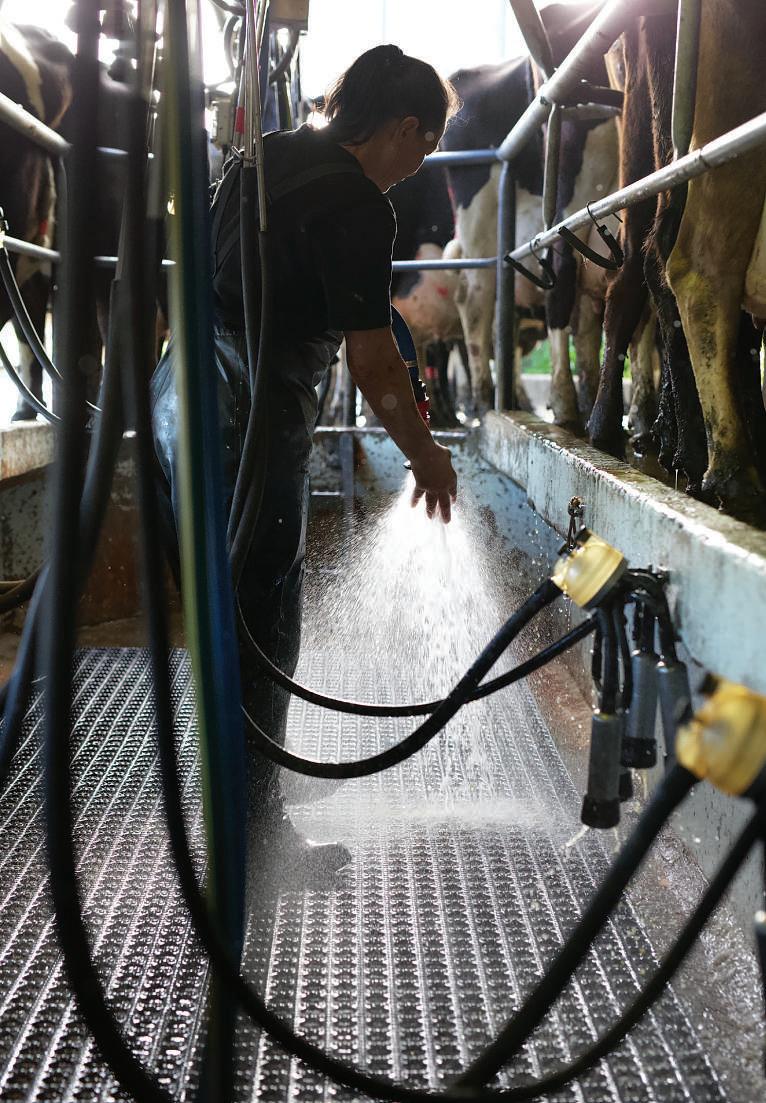



There’s a wide range of solutions, devices and approaches available to keep everyone safe on our farms – and winter is a time when these can be valuable, says Lindy Nelson
Conditions have been challenging on farm in the past two weeks. Winter is definitely here, alongside tougher weather challenges.
As farmers, we still have to take the quad bike out or get behind the wheel of the tractor, increasing the risk of accidents happening. It’s times like these when solutions designed to take the harm out of farming can be so valuable.

This approach is at the heart of the Safer Farms’ Farm Without Harm strategy. We’re gaining a deeper understanding of different forms of harm.
Instead of just relying on high-vis vests or helmets, we are looking to eliminate harm from the system wherever we can by working and learning together as a sector to design better solutions, while understanding that safety starts with a culture of care and continuing to invest in new approaches.
I saw some great examples of this at Fieldays at Mystery Creek in June. There is clearly growing interest in designing simple safety controls into farming systems.
Safetrax by Fleetpin is a roll warning and critical alert system to detect and help prevent situations before they happen. It was a finalist in the Fieldays Innovation Awards in the Growth and Scale Category.
UBCO showed off its lightweight, low centre of gravity 2x2 electric motorbikes. DairyNZ demonstrated the Easy-Entry Trailer Gate and Easy-Access Calf Pen Gate, specifically designed to reduce all-too-common slips, sprains and strains



during calving season. Greenlea showed a short video from sheep and beef farmer Ben Dooley covering tractor safety reminders.
AFFCO covered animal handling tips, while Farmlands promoted howVirkon footbaths can help stop the spread of disease such as rotovirus during calving.
LIC outlined how appropriate AB facilities can help to keep AB technicians safe and give them the best opportunity to get cows in-calf.
Every farmer in the country will know someone, or have been themselves, involved in a serious accident involving a quad bike.
Some farmers are choosing to install crush protection devices (CPDs) on quad bikes. A CPD is specially designed to reduce the chance of serious injury or death in the event of a rollover.
Fairlie farmer Andrew Hurst has been saved twice by his CPD, and my husband and I have installed CPDs on the quad bikes on our Wairarapa farm.
Every farm is different. Farmers will choose options which are right for them and their situation – whether that’s high country, rolling hills, or a dairy farm. But there’s now a wide range of solutions, devices and approaches available for any farm to help keep everyone safe.
Safer Farms is a membership organisation that recognises the whole sector benefits from improved health and safety. It brings together farmers and senior leaders from agribusiness, agricultural industry groups and government. New Safety Alerts are added regularly. To see others, or to subscribe to have Safety Alerts emailed to you, see farmwithoutharm.org.nz/safety-alerts.
Lindy Nelson is a Wairarapa farmer and Farm Without Harm Ambassador.





The team at EmploySure take a look a technology on farms and say it can boost farm productivity, but only if it’s used correctly.
The Government’s goal to double exports over the next decade will largely depend on the agricultural industry’s ability to boost productivity.
Introducing new technology and machinery in farming will be key to achieving this goal, reducing the time and effort it takes to complete certain tasks or processes, which should bring down production costs and boost profits for farmers.
However, without proper training for workers to use new equipment, business owners can be exposed to a whole new range of risks. We spoke to Peninsula New Zealand’s advice team about the impact of new technologies on the farming industry, what businesses can do to adequately train staff to use them, and how to introduce them in a way that excites, rather than scares, their workforce.
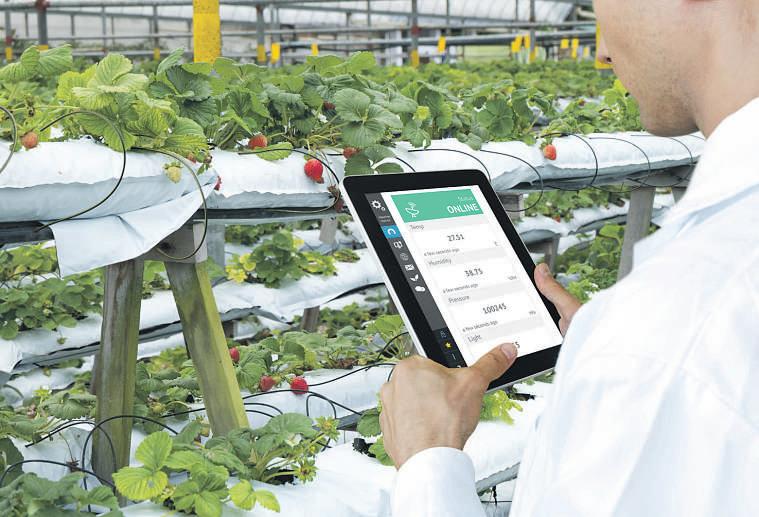
Q1. What impact are new technologies such as AI and automation having on farming?
Until ChatGPT starts milking cows, AI’s impact on the farmers on the ground is still, in many cases, immeasurable and in its early stages. If any business operations are conducted through computer systems, then AI may be able to streamline these processes, a potential that is continuing to grow as it evolves.
The biggest impact on productivity is seen through the implementation of machinery designed to automate what were previously very physical and highly demanding manual processes.
The introduction of heavy machinery is capital-intensive and the Government’s intention to double exports should be factoring in the expensive up-front cost farmers will need to incur to obtain the means to do this.
“
Introducing new technology and machinery in farming will be key to achieving the Government’s goal to double exports over the next decade.
New technology and machinery has the potential to make farming easier and safer, and to speed up operations.
Q2. How can businesses ensure workers are adequately trained to use new technology or machinery?
Conducting training is not simply a tickbox exercise for employers to say they’ve done it – employees need to be engaged and prepared to use whatever equipment they’ve been tasked with operating. Mistakes and accidents can be not only costly, but fatal. In 2023, agriculture was the industry with the second highest number
of work-related deaths in New Zealand, according to WorkSafe Therefore, ensuring health and safety with adequate training is paramount.
Specifically, safe operating procedures and pre-start checklists should be used and clearly outlined where necessary, as well as allocating correct PPE and conducting regular maintenance Certain licences may need to be acquired and employees should be supervised before being left to manage anything in a sole capacity.
Employers should also have clear points of escalation if there are any concerns with the machinery’s operation, or if the operators have any questions.
Every situation is unique, but applying a conservative approach to health and safety is best, even if it seems excessive at times. When it comes to health and safety, it’s always better to be safe than sorry.
Q3. How can business owners encourage workers to embrace new technologies, especially if they’re used to doing things a certain way and are wary of change?
Embracing new technology presents an opportunity to upskill existing staff, who are likely to react positively if it’s introduced this way.
Having the right policies and procedures around the introduction of new processes can help, but it can be as simple as just being transparent and open with staff.
Seeking staff feedback before anything new is rolled out can assist the employer in understanding if existing staff have any fears.
Maybe they feel their job is threatened by the introduction of new technology, or maybe they’re worried they won’t be able to operate the machinery correctly.
Understanding the concerns first will allow the employer to tailor the roll-out of any new machinery or processes to be sensitive to this and alleviate any apprehension.
After all, new technology and machinery has the potential to make farming easier and safer, and to speed up operations.













































































































































































A Rangitīkei farmer believes art can lead the agricultural sector into robust, but nuanced conversations – helping people tackle sensitive subjects. By Lauren Jackson.
Rangitikei farmer Laura Morrison is a bit of a big-picture thinker. She sees connections where others wouldn’t and creates welcoming spaces that spark fresh thinking.
About two years ago, Laura and husband Richard bought a 250-hectare block of land from Richard’s family, setting out on their own to run the farm they’ve named The Gullies. Home to Aotearoa New Zealand’s original Wiltshire k Herefords, The with ethical livestock with a focus on meat production.

ving recently stepped down from her parttime role at Federated Farmers, “all irons are now in The Gullies fire”, Laura says and she is finding new and exciting ways to marry agriculture with art.
The couple manage an Airbnb on the farm – known as The Cottage – and as part of The Gullies’ social commitment to giving back, Laura established The Gullies Residency in 2022. An
artist stays at The Cottage for eight weeks during the residency, taking inspiration from the environment as they work. The concept is to “find that sweet spot between engaging with artists and giving them the space to share their ideas”.
At the end of 2023, Laura opened The Gullies Art Store, also in Marton. The formerVictorian butcher’s shop provides a brick-and-mortar satellite for The Gullies, celebrating well-made items– art, good design and rich textiles.
“It’s a real blend of old and new, just things that I hope work well together,” Laura says. Large framed photos of the farm greet visitors. “Straight away we can strike up a conversation. My personal crusade is seeing justice in the way that a public conversation is had around why farming is essential, why it matters and why we need to sustain it.”
Burnout and exhaustion are real in the agricultural sector. Traditionally, farmers won’t speak up until their back is against the wall, Laura explains.
But she’s keen to see them take inspiration from artists when it comes to transparent, proactive – sometimes awkward – conversations, saying, “Artists and makers are often able to navigate really sensitive topics, without thinking that it’s too emotional to talk about.”
An open-studio day then brings the public through the farm gates, with Te Whare o Rehua Sarjeant Gallery

Main:LauraMorrisonsays artistsandmakersare oftenabletonavigatereally sensitivetopics‘‘without thinkingthatit’stoo emotionaltotalkabout’’.

Whanganui – which has shown unwavering support – hosting a public talk.
The Gullies also commits to buying at least one artwork created by the artist inspired by their residency, and creates a limited-edition print run, with profits funding future residencies A tree-planting ceremony at the end creates a living connection between the artist and The Gullies.
In 2022, The Gullies’ inaugural resident artist was Andrew McLeod, followed by Caroline McQuarrie in 2023.
“Caroline and Andrew are just so articulate,’’ Laura says. ‘‘They get the residency; they get farming. They engaged in farming practices and spent time with the animals. They spent time asking Richard questions and understanding genetics.
“It’s just walking that path together and continuing to see that unlikely bedfellow relationship flourish.”
Andrew loved the farm, and Laura got a kick out of watching Andrew and Richard hang out, having long chats. Botanical, agrarian elements appeared in Andrew’s work.
Observing the Morrison family running The Gullies inspired the themes of Andrew’s painting, Family Portrait. Taking artistcommunity connection to the next level, Andrew is now engaged to a local, and moved from Auckland to Whanganui to be with her. The couple are preparing for an April wedding. “It was just so cool to have him here,” says Laura. “A real honour.”
Meanwhile, Caroline explored locally sourced wool and engaged with local weavers through Marton’s arts and crafts group. “It was a real joy to see her throw herself into life in the Rangitīkei,” smiles Laura.
As a photographer and weaver, Caroline has “a really logical mind”, Laura says, and quickly cottoned on to the mechanics of farm work. Family and friends visited each artist, broadening the Morrison family’s social circles. “The artists become part

of your family, but they’ve got their own space.”
Laura believes the best artwork comes from artists who are prepared to put theirvulnerability on the line, and she is determined to provide a safe space for her resident artists to do so. She has “zero interest” in educating people about art or agriculture. “I just want the two to meet, and let the sparks fly for themselves.”
Leaning into vulnerability and sharing experiences has helped Laura through the toughest of times in her own life – she suffered two early miscarriages and the loss of a baby boy halfway through her pregnancy, five years ago. Time may help,
but “you never get over it”.
“There’ll still be some days where driving along, and all of a sudden, the little baby that I held – his image, his body, the sunrise that day, being in the ED when we lost him these crystal-clear images race back. Now I don’t see it as overwhelming grief, just more like these next few minutes belong to him.
truly bittersweet little snatch of time. It’s so beautiful. I get to hang out with him for a few minutes while I’m crying, thinking of him, and remembering him. It’s deeply private and special. Some-times I picture him hanging out with the boys, and then other times it’s as he was on that day.”
Laura makes time for these moments. “You have to, or it will reach out for you You can’t run away from yourself.”
Navigating the road to acceptance requires the right tools, and Laura encourages women to seek them out. “It’s a path that needs to be trodden. It’s just part of my story now; it’s part of Richard’s story; it’s part of the boys’ story.”

Integrating their experience of pregnancy loss into everyday life has been empowering family. Laura treasures the e who don’t“scuttle away” en it comes up. “It takes lot of bravery not to shy away from those hard conversations.”
And those hard conversations circle back to where art meets agriculture and the fiercely intelligent way everything connects in her mind.
“That’s my time – a
Previously, she saw farming The Gullies as Richard’s gig, while she juggled Federated Farmers role responsibilities at home. Now, thanks to good communication with Richard and the courage to listen to her innervoice, she has a clearer picture of what she and Richard want to achieve. “I feel more invested with the residency, The Cottage, the store, the marketing of the genetics and wanting to have those bigger conversations around ag. “I feel like there’s more of a partnership now, on and off farm, which is gratifying.”

If you can’t pay the bills, it is hard to invest in sustainable outcomes, Doug Dibley tells Bethwyn Littler.
Rotorua farmer Doug Dibley says the constants of farming are change, adaptation and hard work. Another constant on the land he farms is family.
The first generation of his family to farm the land in 1887 were his great-great grandparents Charlie and Fanny Karl, who fell in love with the area after a pig hunting visit.
“Their daughter Susan Karl married my great-grandfather Douglas Dibley who was the last Anzac survivor from Gallipoli in WWI. My grandfather Eddie Dibley turned 95 last year and still lives on the farm.”
Dibley is a DairyNZ Environment Leader (DEL) sharing his learning and networking with other farmers across the country.
He did his honours degree at the University of Canterbury in geography and environmental science studying water quality in the Rotorua Lakes catchment and mitigation methods farmers could use to reduce environmental impacts.
“I studied the leading contaminants and remedial activities which could be done on the farm to reduce the impact.”
On the back of that research, the Bay of Plenty Regional Council created a summer internship for him working with the farmers in the Rotorua catchment area.
“One of things I did was map effluent blocks and traffic light risk based on soil type and contour.”
One of his roles in the past was as a sustainable dairy adviser with Fonterra He was later appointed demonstration manager with Owl Farm, a position he held for two years.
He then went back to Fonterra as


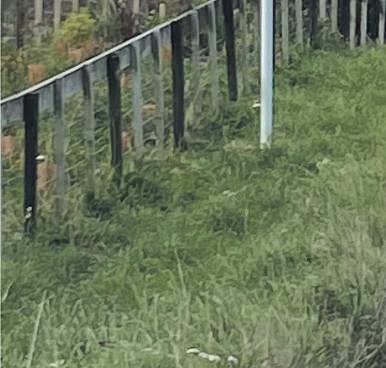
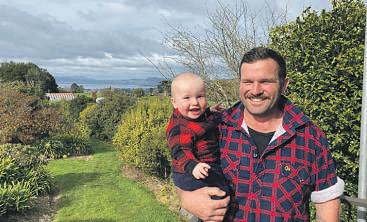
sustainable dairying manager for the North Island, then regional farm operations manager for the central North Island looking after the sustainable dairy team.
Dibley says there are big philosophical decisions that need to be made around farming systems and styles in New Zealand at the moment.
“Our productivity and profitability is being challenged at the moment because of rules and regulations, but we would be naive if we didn’t think the entire country is going to be under restrictive rules in some form in the future.
“We have opportunities to be the first catchments in the process of transitioning to a more sustainable productive model. But you have to be profitable to be sustainable. If you can’t pay the bills, it is hard to invest in sustainable outcomes on farm.”
Dibley says in order to drop emissions 10% by 2027 they will need to start looking at some big ticket items such as stocking rate, fertiliser and feed because they have



picked the low hanging fruit up until now
“We have dropped maize from our nutrient plan as well as summer cropping and slightly reduced our nitrogen applications and stocking rate to ensure we meet the reducing nutrient cap we farm within.”
The current farm is 150ha of effective land, about 200ha in total, however they lease some further land for young stock. They are currently milking 460 cows.
“Our plan is to potentially retire around 25ha of steep and marginal land into pine trees. The flatter land which is more fertile grows great grass throughout the year. We would rather still have a higher stocking rate which can harvest the grass in areas it grows well and potentially retire other steeper, more marginal country to focus on productivity and therefore profitability.”
He says the farm is one of four in Bay of Plenty working with DairyNZ to showcase the use of plantain
“We have started oversowing the whole farm in plantain and we are seeing great benefits in feed and also a reduction in nutrient leaching.”
Although he has gained experience and expertise in the corporate world, once he had children it became important to bring them back to the farm environment.
“There is also a sense of generational responsibility even though Mum and Dad certainly never stressed the point.

“There is a lot happening for us at the moment which can be daunting and exciting. We look at it as a challenge and an opportunity. This farm looks very different to five years ago and it will look different again in 10 years. Our goal is to get it to a


point where there are fewer animals, fed better and more production achieved per cow.”
Dibley says although he has hard days, farming is ingrained in him and it is very rewarding.
“There is a pull to the land. I always have my mind on the long-term and I am driven by finding ways to future-proof the farm in terms of profitability, productivity and sustainability.”
Alongside his family, he says one man, a farmer, influenced him early on in his journey.
“When I was with Fonterra, I met Martin Bennett who farms just out of Putaruru and is one of the original DELs. He was a mentor and I went on the Owl Farm journey with him.”
Dibley is currently involved in developing the subdivision his parents started working on more than 20 years ago.
“The subdivision was always a longterm strategy for Mum and Dad in order to clear debt which is more important now than ever. Given the generational aspect of our farm it was important the subdivision continued this legacy.
“We haven’t left any stone unturned and have developed a subdivision to a high standard to reflect the care and attention we have always shown the land.”
The subdivision covers 40 hectares with 33 lots. They have already sold a few sections and Doug and his young family are planning to start their own build soon.
“Subdividing is a form of diversification but I’ve done the numbers and dairying is still going to be the most profitable return at scale.”












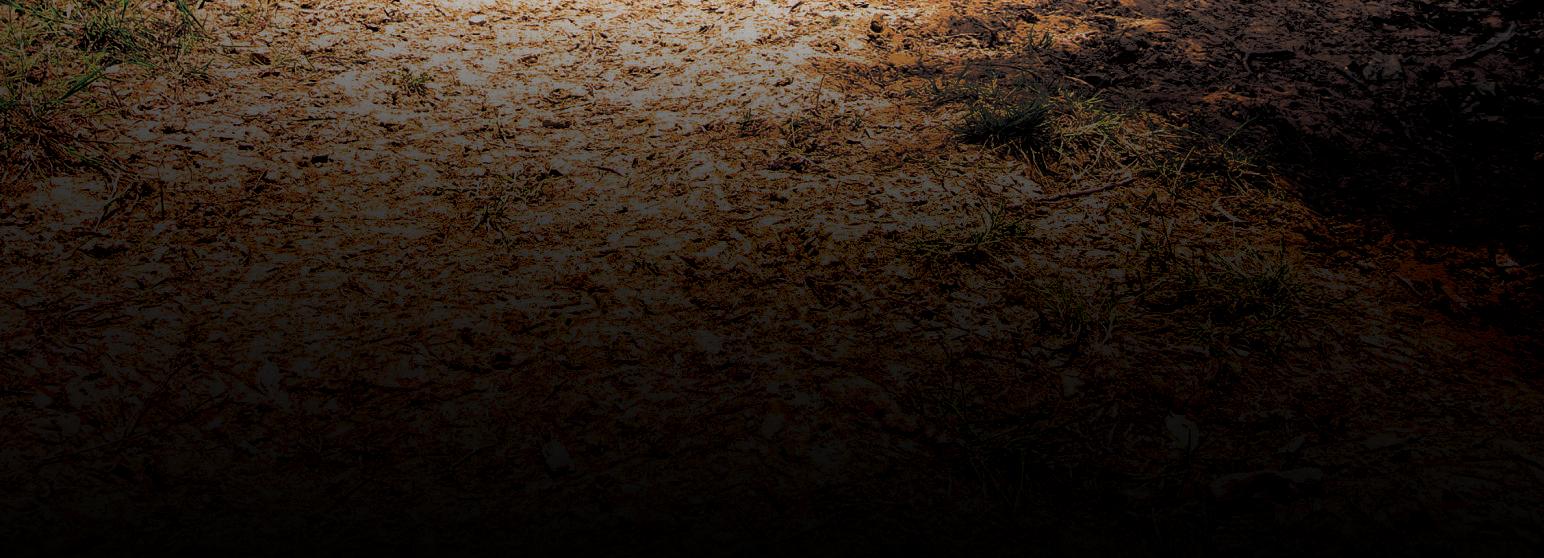






The Real Estate Institute of New Zealand (REINZ) has released its latest data, revealing a notable decrease in farm sales across the country. The findings indicate significant trends and shifts within the rural real estate market that industry experts and commentators should closely monitor.
The report highlights that there were 25 fewer farm sales (-9.3%) in the three months to May 2024, compared to the same period in 2023. The total number of farm sales for this period was 243, down from 268 the previous year. This also represents a 2.8% decline from the 250 farm sales recorded in the three months to April 2024
On an annual scale, 951 farms were sold in the year to May 2024, which is 232 less than the number sold in the previous year. This decline was
observed across various farm types, with dairy farms seeing a 26.3% drop, dairy support farms down by 24.2%, grazing farms decreasing by 33.7% and finishing farms falling by 17.2%.
Conversely, arable farms experienced a 14.3% increase in sales.
The median price per hectare for all farms sold in the three months to May 2024 was $26,915, a 2.8% decrease from $27,695 in the same period the previous year. This represents a 6.1% decline compared to the three months to April 2024. The REINZ All Farm Price Index, which adjusts for differences in farm size, location, and farming type, fell by 1% from the three months to April to the three months to May 2024 and saw a significant 12.8% drop compared to the three months ending May 2023.
Regionally, five areas recorded an increase in farm sales compared to the
same period last year, with Auckland and Gisborne/Hawkes Bay seeing the most significant rise (+8 sales each). However, Manawatu-Whanganui and West Coast experienced the largest declines, with -12 and -11 sales respectively. Six regions saw increased sales compared to the three months to April 2024, notably Otago (+7 sales) and Nelson/Marlborough (+3 sales).
Dairy Farms
The median sales price per hectare for dairy farms was $35,135, showing a modest annual increase of 1.2%.
However, the price per kilo of milk solids dropped by 17.6% over the year to $30.45 The REINZ Dairy Farm Price Index declined by 2.3% from the three months to April to the three months to May 2024, and by 17.4% compared to the previous year.

Finishing Farms
The median sale price per hectare for finishing farms decreased by 12.3% over the past 12 months to $32,830. This sector saw a 1.2% increase compared to the three months ended April 2024
Grazing Farms
The median price per hectare for grazing farms fell by 2.6% over the past year to $13,880. This sector also recorded a slight increase from the three months to April to the three months to May 2024
Horticulture Farms
Experiencing the most substantial decline, the median sales price per hectare for horticulture farms dropped by 22.6% over the past year to $300,000.






















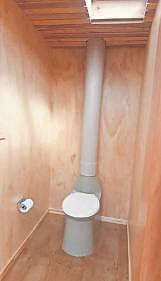
By Rabobank.
Beef
Strong beef pricing is likely to continue
Both procurement pressure and a strengthening pull in certain export markets are driving positive beef farmgate prices this winter.
Beef shipments to the United States dominated New Zealand exports byvalue for the month of May, up 31% YOY in value (to NZ$261 million) with volume up 17% to just under 25,000 tonnes.
Contrasting this is China’s soft demand which saw exports drop 33% YOY in volume to 14,400 tonnes in May and 45% in value to NZ$97.8m. The US has now moved ahead as the largest market for New Zealand beef by both volume and value for this season to date.
Beef exports to Japan surged ahead compared to May 2023 with volume up 164% to 5500 tonnes. Total season-to-date volumes are also well up for Canada (+25%) and Taiwan (+79%)
Looking to our competition, both Australia and Brazil are still producing and exporting in large volumes. However, with more than one market performing well for New Zealand beef exports and the lower exposure to China, RaboResearch forecasts New Zealand farmgate beef pricing to remain strong in coming months.
Dairy
The Oceania spot butter price hit a record high in June 2024 surging past US$7000/ tonne FOB for the first time. Behind these soaring butter prices is a combination of supply and demand fundamentals for dairy fat and cream. Sluggish milk supply growth in the northern hemisphere during the seasonal flush is limiting surplus milk available for manufacturing. New Zealand is now into its milk production hiatus, helping to curb supply in the short term.
Inventories in international supply chains are not excessive, leaving spot purchasing vulnerable. Furthermore, there is a seasonal increase in demand for fat products, like ice cream, in the northern hemisphere at this time of the year.
Butter pricing is outperforming the broader dairy complex. In June 2024, spot prices (in USD terms) for the other main dairy commodities were flat to slightly higher. SMP is particularly languishing behind other dairy commodities, lingering over 10% behind five-year average prices. For farmers, this is good news Butter prices are one of the reference commodity


products which make up Fonterra’s farmgate milk price calculation.
Consumers should prepare for the potential for some sticker shock in supermarket aisles. Given New Zealand retail prices are set periodically, and with reference to global commodity price trends, consumers potentially need to brace for higher prices of butter and co-products such as cream at the checkout.
There’s some good news for export values and there may be more good news in months to come. Average export values for lamb were NZD 10.42/kg FOB for the month of May, the highest year-to-date values and the highest seen since September/October 2023. Perhaps some more positivity is on the horizon with lamb and mutton prices following a pleasing trend upwards as winter settles in – albeit still below the five-year average range.
Saleyard store pricing for lamb has increased with the renewed positive pricing potential for early spring lamb schedules along with procurement pressure from farmers incentivised to hold numbers on farm. Prices paid in both islands took an upward leap by NZ 10 cents to 30c/kg lwt, although, as winter knuckles in, this demand may slow by August.
Urea prices ticked upwards in June. Recent price action has turned more bullish, and
one factor that will likely continue to provide support is China. The country has placed further restrictions on urea exports. Initially the expectation was for exports to resume in August but it’s now unclear how long the halt will last
One factor you would expect to add some downward pressure to global pricing is Egyptian plants, which are now back online. The news is a boost to global supply, especially given uncertainty regarding how long the disruptions would last.
Last month we highlighted the risk of rising container shipping rates, which could result in higher farmgate prices for farm inputs. In June, the WCI shipping index continued its dramatic rise and is now trading at levels not seen since September 2022. The ongoing Red Sea crisis is continuing to absorb capacity, and the Houthis are intensifying their attacks (as visible in the most recent drone/missile attack in mid-June).
Meanwhile, port congestion remains a problem across several regions.
From an agrochemical standpoint, companies across Asia, South America, and North America continue to face the challenge of high inventories The surge in grain and oilseed pricing during 2022, which was a consequence of the outbreak of the Russia-Ukraine war alongside three consecutive La Niña events, initially boosted demand.
However, the situation has since changed. G&O prices have fallen dramatically as global
supply woes subsided. Meanwhile, product price inflation has intensified the decline in farmers’ operating margins. This has led to a build-up of high-priced inventory, which will take time and new strategies to destock. This will likely be an ongoing issue throughout 2024 and early 2025 and will have an impact on farmgate prices.
Oil and freight
Brent crude rebounded by more than 5% in June despite carrying weak momentum over from May. Prices dipped early in the month after OPEC+ confirmed that it would be extending production cuts but failed to announce any further cuts to output.
Brent crude futures closed June at US$85/ bbl, but we see limited upside in the near term as the US driving season has gotten off to a sluggish start and demand signals out of China appear to be reasonably weak.
Over the longer term we remain bullish. Our energy analysts believe that prices will trend higher from Q3 onwards as US production begins to wind back.
Ocean container rates continue to surge higher on the back of port congestions in Asia and capacity constraints.
The capacity constraints may even spill over to break-bulk vessels as some shippers are exploring the option of moving containers onto break-bulk ships
Container rates around the globe at the end of June had surged over 200% compared to the same period last year, led by routes originating in Asia.















